In photos: How the COVID-19 pandemic unfolded in 2020
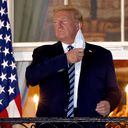
Published Date: 12/7/2020
Source: axios.com
The COVID-19 pandemic has affected the lives of people in 191 countries and regions since spreading from China in January — killing more than 1.5 million people, infecting more than 66.3 million and disrupting many more lives.
The big picture: Companies and schools around the world have shifted to online work and classes. Many governments have responded with restrictions including lockdowns, social distancing measures and mask mandates.
January
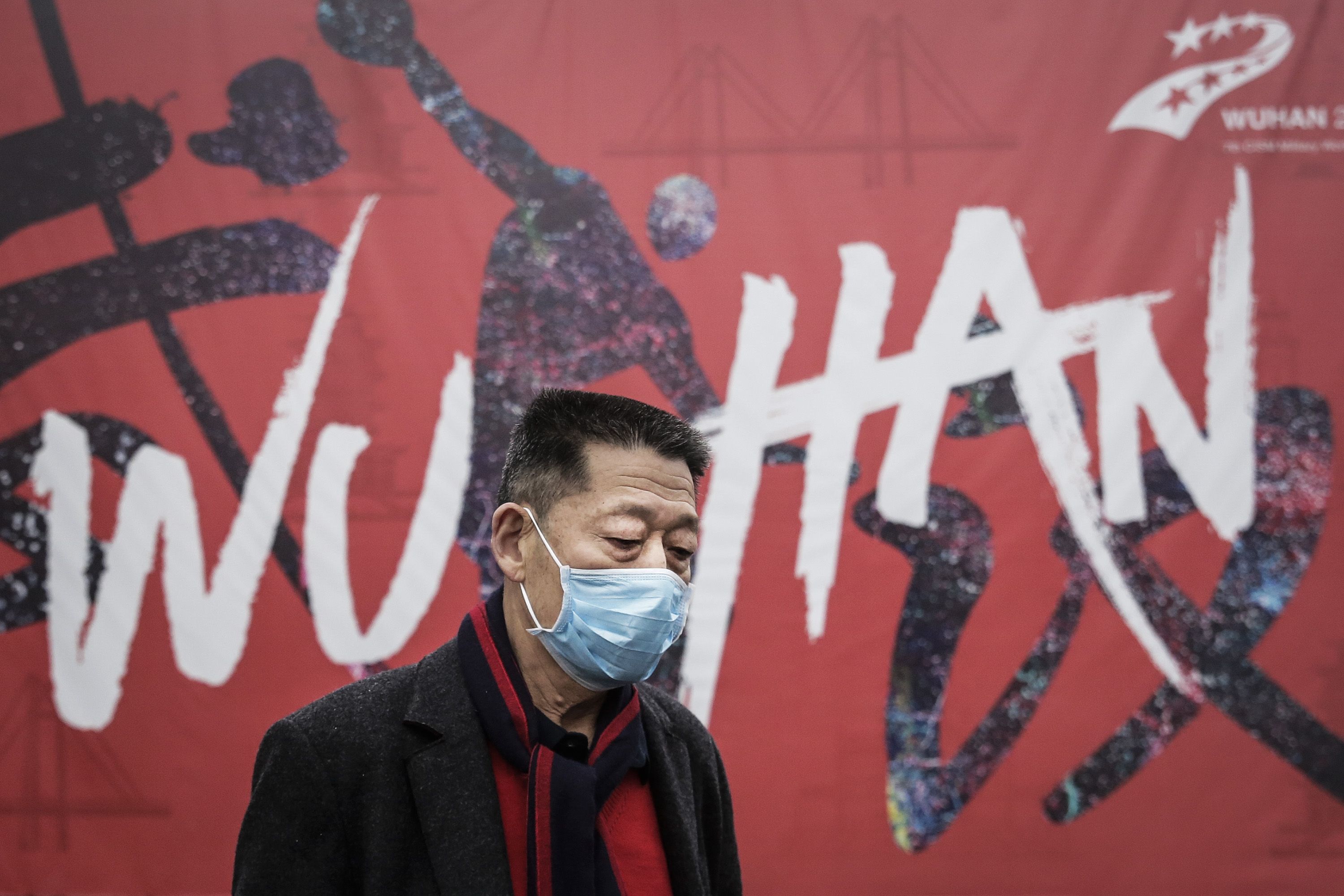
A man wears a face covering on Jan. 22 in Wuhan, Hubei province, China, where the virus was first detected last December. Masks would become a symbol of the 2020 pandemic, with the CDC urging on Dec. 4 for their universal use amid high-level transmission in the U.S. Photo: Getty Images
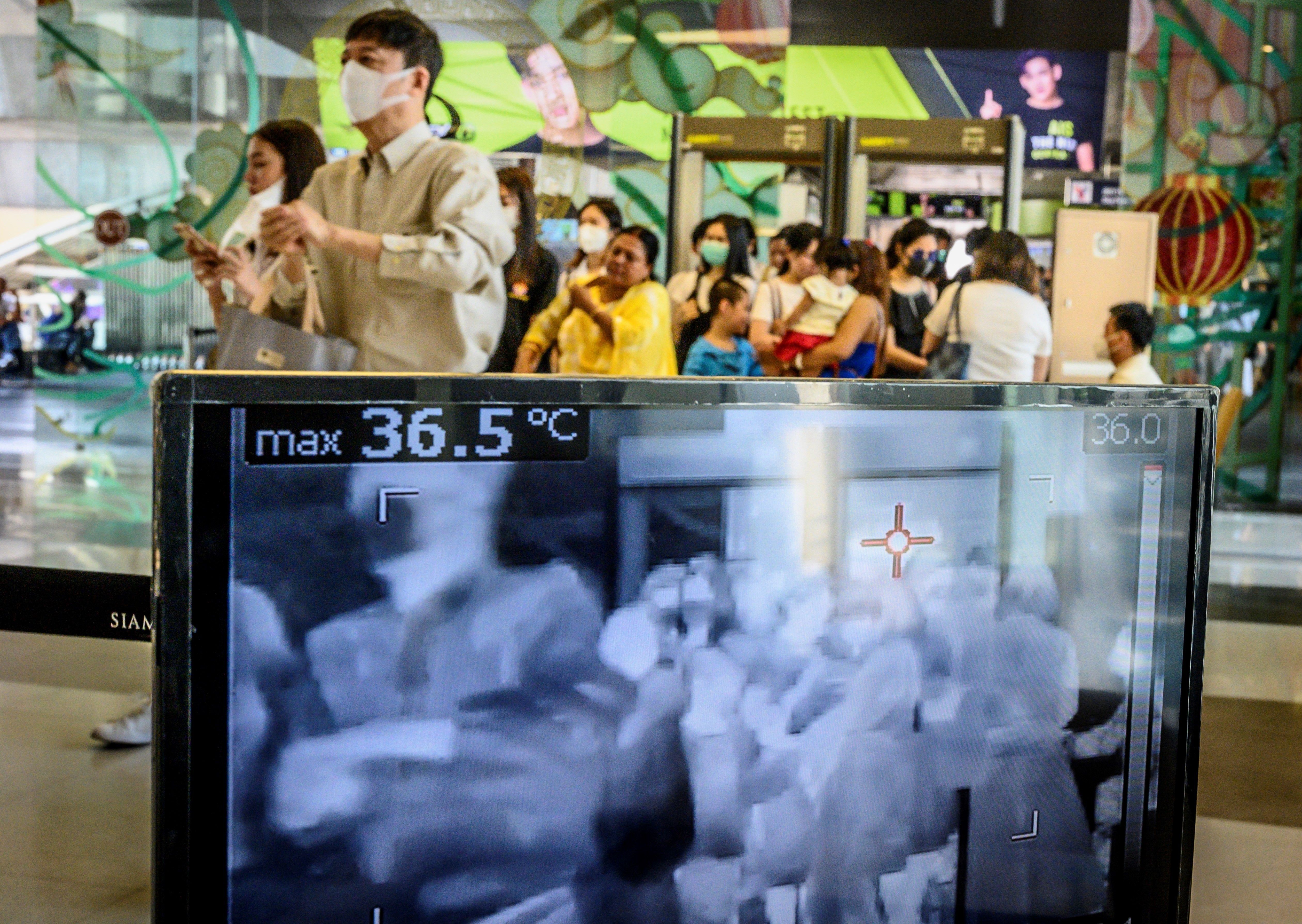
A thermal scanner captures shoppers entering a mall in Bangkok on Jan. 29. Thailand reported on Jan. 13 the first case of the virus outside China. The country has since imposed strict measures to keep COVID-19 numbers to below 4,000. Photo: Mladen Antonov/AFP via Getty Images
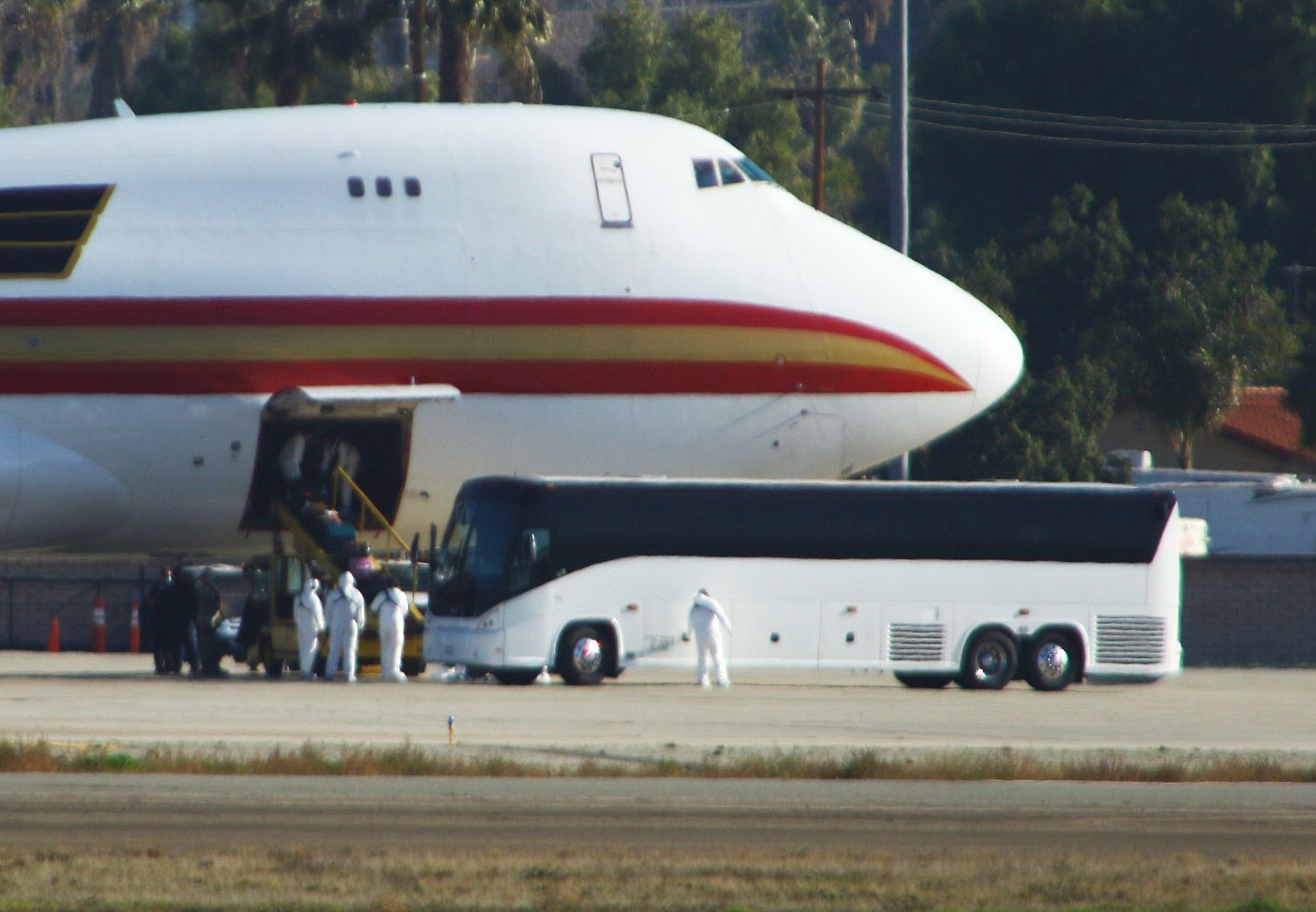
Personnel in biological hazard suits at March Air Reserve Base in Riverside, Calif., await passengers repatriated from Wuhan on Jan. 29. Nearly 200 Americans were on the flight. The U.S. launched further evacuations from the city in February. Photo: Matt Hartman/AFP via Getty Images
February

A plaza in Seoul, South Korea, Feb. 11, as the global virus death toll crosses 1,000 and the World Health Organization announces the official name for the disease that causes the novel coronavirus: COVID-19. In February South Korea had the most cases outside mainland China. It later curbed the spread, though there's been an uptick at the year's end. Photo: Ed Jones/AFP via Getty Images
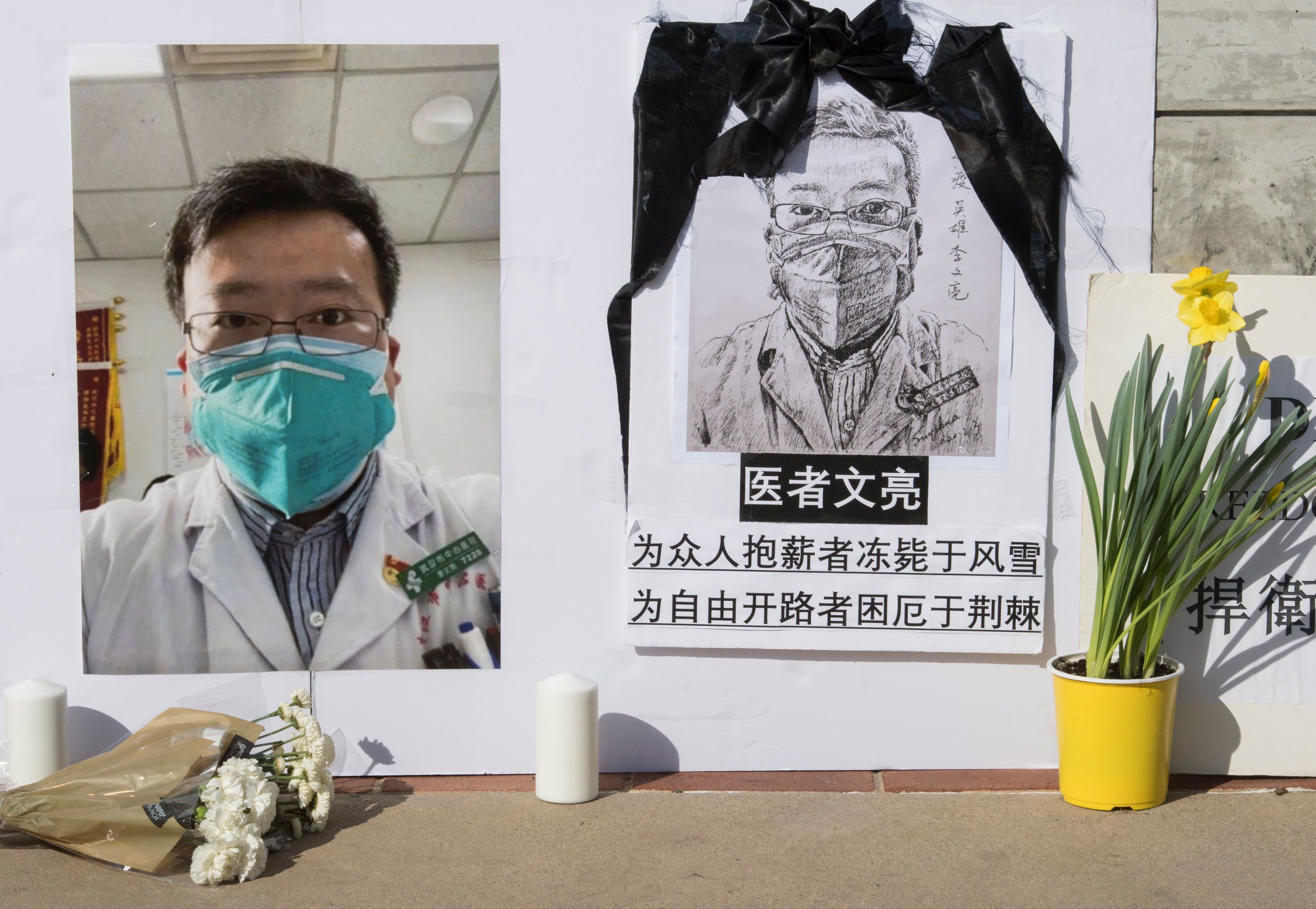
A memorial outside the UCLA campus in Westwood, Calif., on Feb. 15 for Li Wenliang, an ophthalmologist at Wuhan Central Hospital who sounded the alarm on the coronavirus, for which Chinese authorities attempted to silence him. Photo: Mark Ralston/AFP via Getty Images
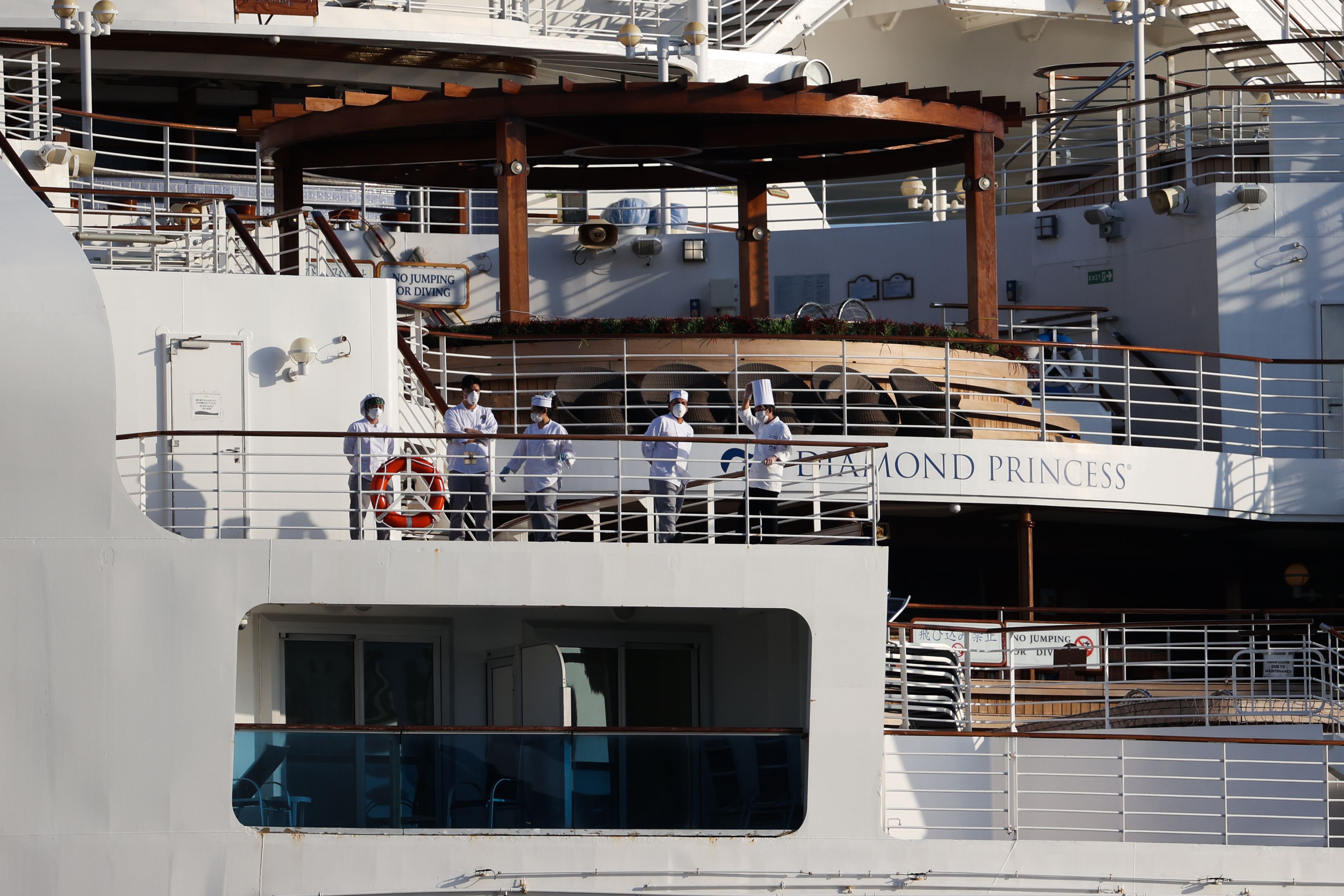
The Diamond Princess, quarantined off Yokohama, Japan, on Feb. 21. COVID-19 infected 714 people aboard this ship, killing 13. Cruise ships were the sites of some of the most severe cases as the virus began to spread — prompting the CDC to issue a no-sail order, which was replaced with a less restrictive "conditional sailing order" in October. Photo: Takashi Aoyama/Getty Images
March
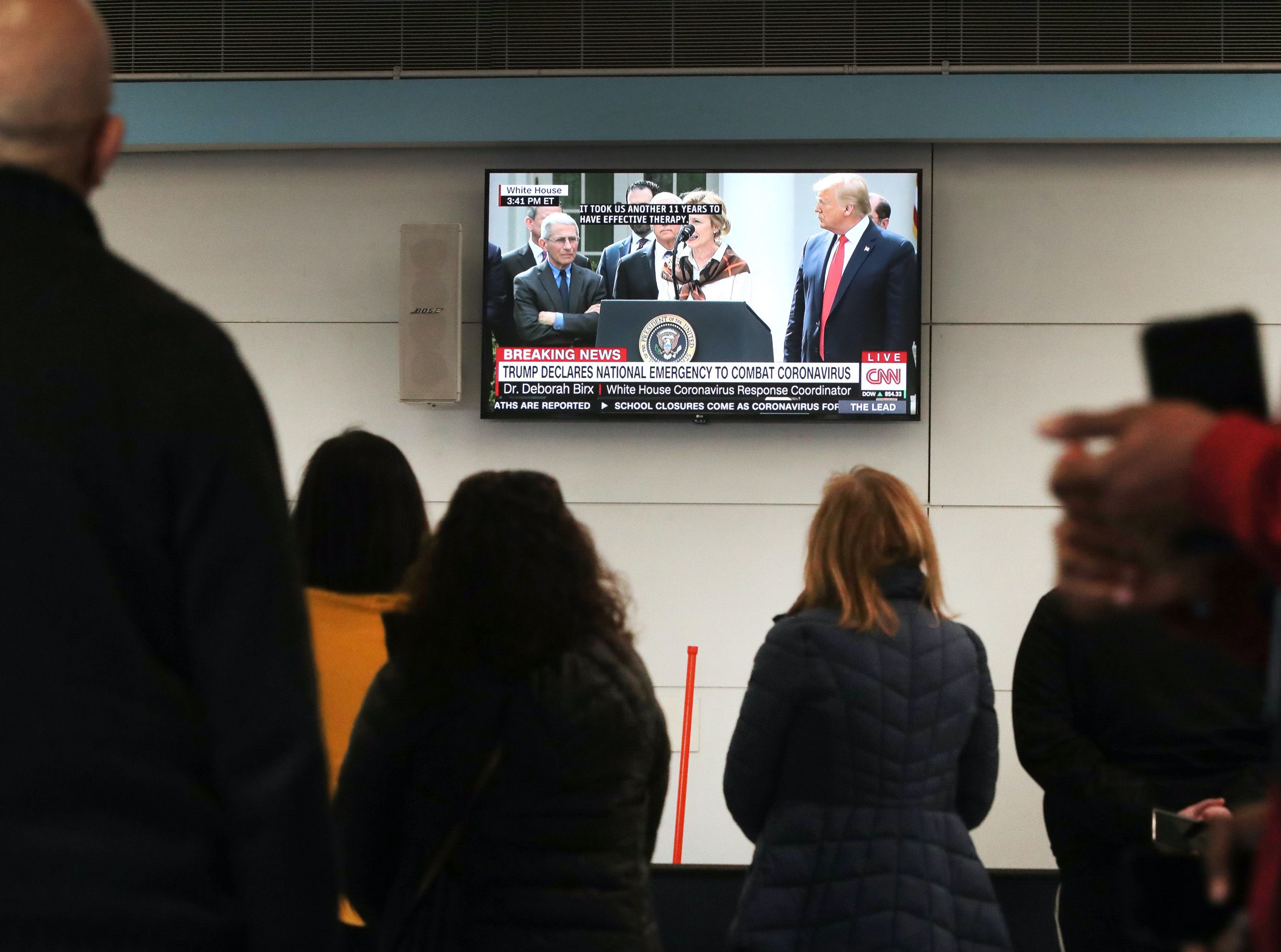
COVID-19 shook the world in March. Here, people at Chicago's O'Hare International Airport watch Trump hold a March 13 news conference declaring a national emergency over U.S. cases that Trump said on Feb. 27 would "within a couple of days ... be down to close to zero." He said throughout the year he believed the virus would "disappear." Photo: Scott Olson/Getty Images
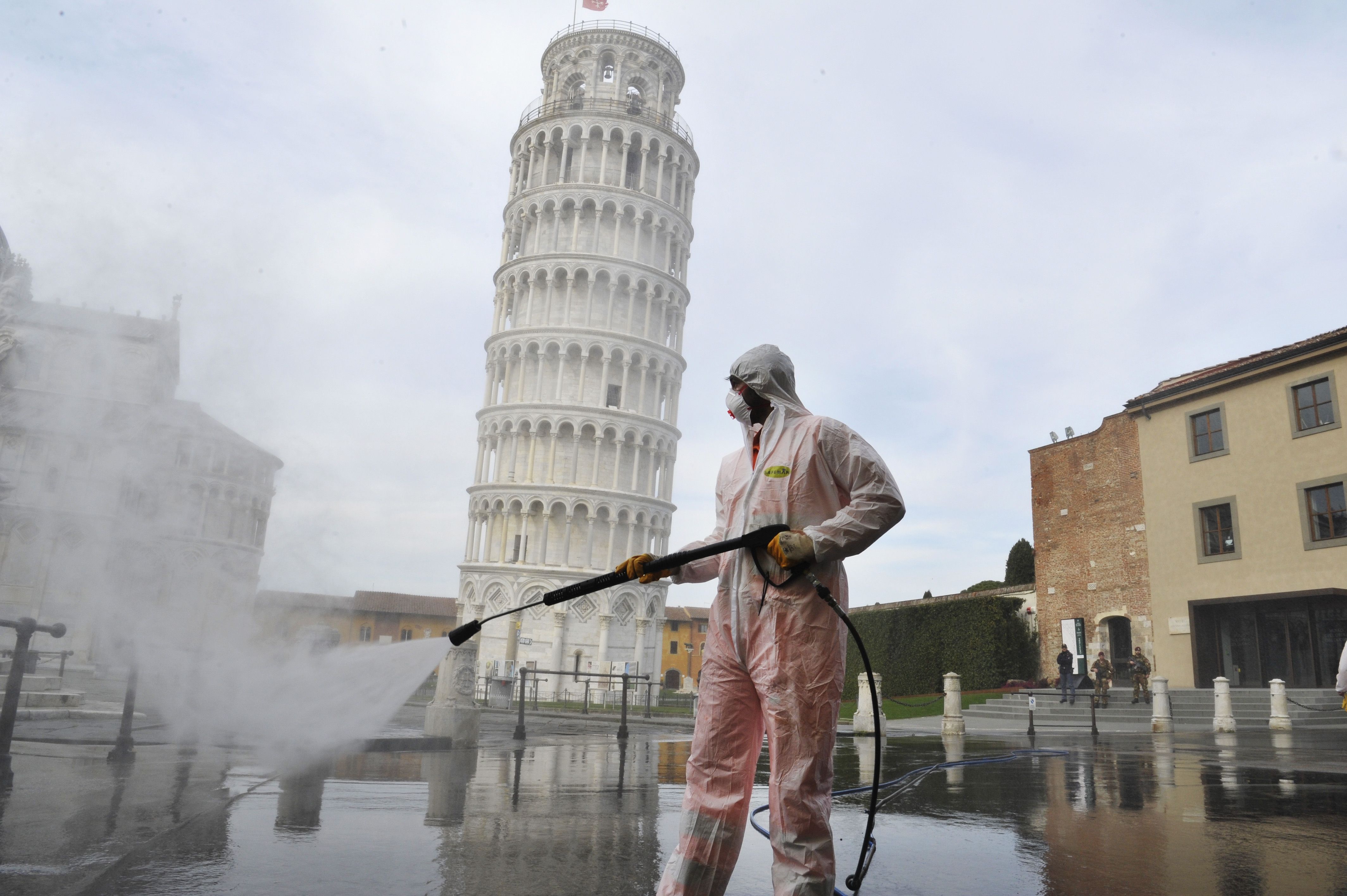
Sanitization in Pisa, Italy, on March 17 — eight days after a national lockdown was imposed, as the country becomes a coronavirus epicenter. Italy contained the first outbreak. But, like elsewhere in Europe, cases have surged at the end of 2020 and the government imposed more restrictions. Photo: Laura Lezza/Getty Images
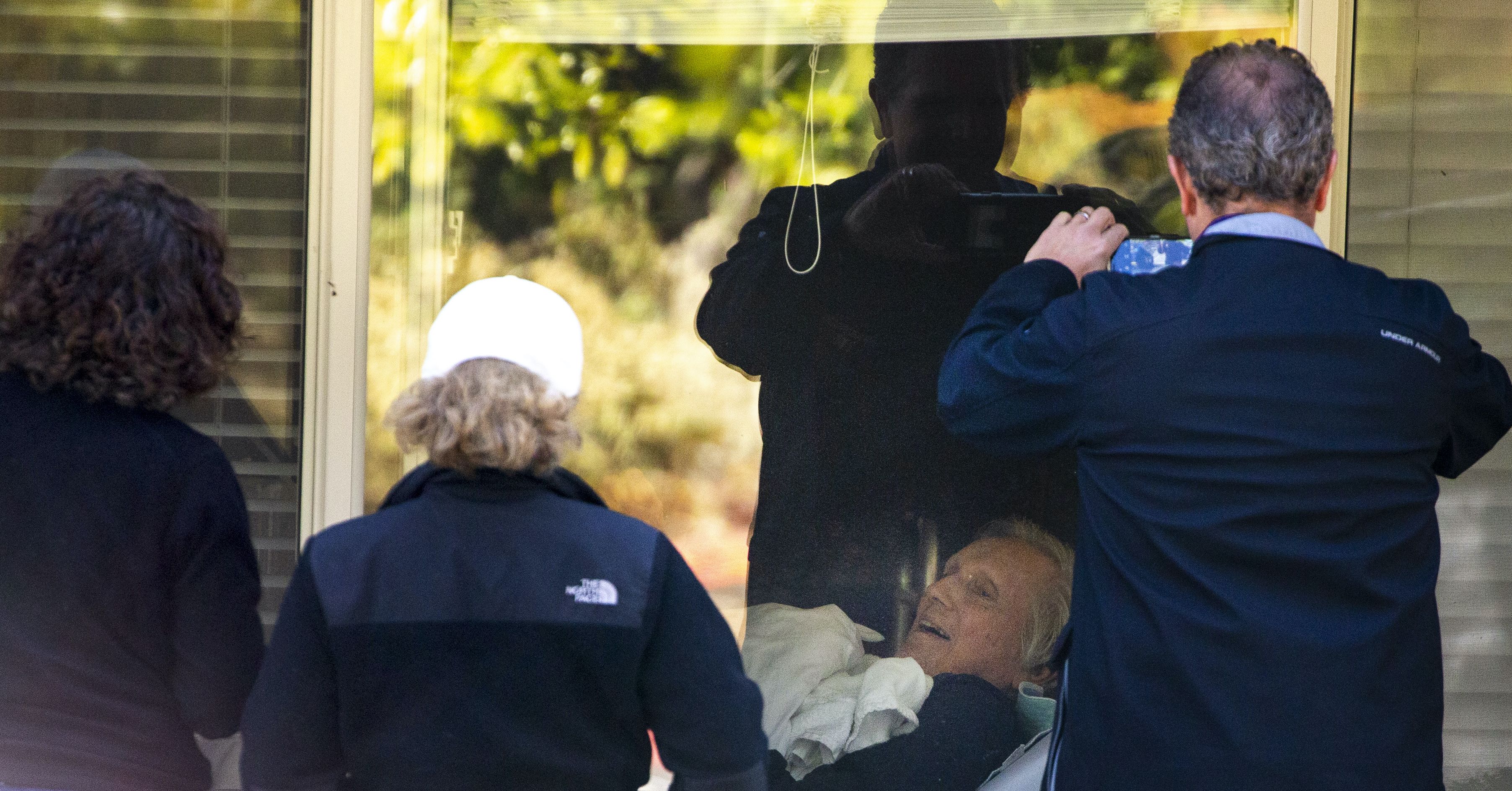
Life Care Center of Kirkland, Wash., patient Chuck Sedlacek, visited by family on March 18. He was admitted Feb. 20 for a broken ankle and later tested positive for the virus during a major outbreak at the facility. Elderly care facilities have been particularly vulnerable to COVID-19. Photo: Karen Ducey/Getty Images
April

A school teacher works from home in Arlington, Va., on April 1. School districts have since reported declining grades, as some students struggle to adjust to the challenges of remote education. Online classes have left students of color and low-income students at greater disadvantages. Photo: Olivier Douliery/AFP via Getty Images

A mobile shower station in New York City, a partnership between Coalition for the Homeless and Doctors Without Borders, also known as MSF — which also dispatched teams to Florida, New Mexico, the Navajo Nation and Puerto Rico. MSF told Axios in a statement that it was operational in the U.S. from April to October. Photo: Michelle Mays/MSF
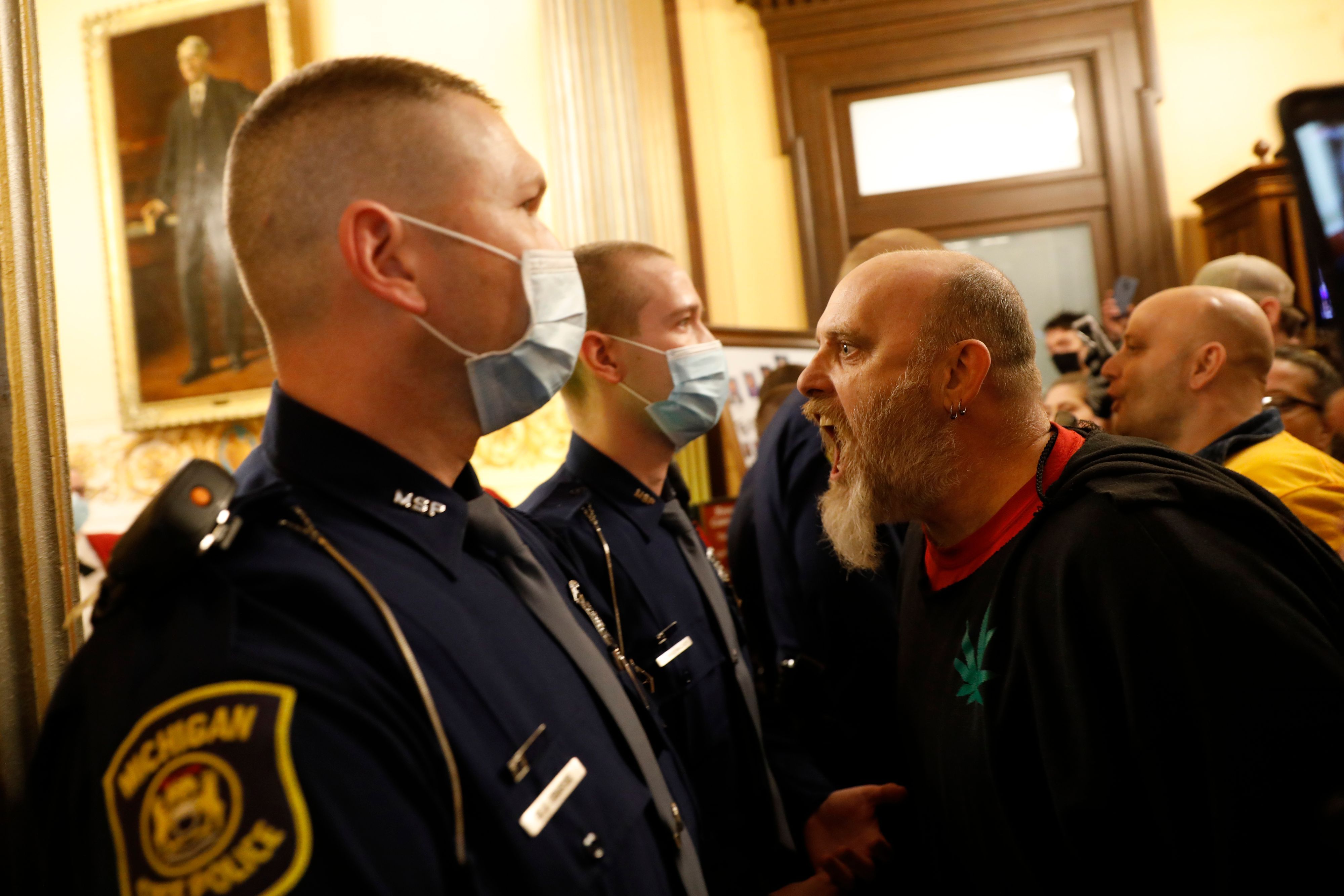
Protesters, many armed, try to enter the Michigan House of Representatives April 30 following a rally against Gov. Gretchen Whitmer's coronavirus restrictions. In October, the FBI charged several suspects over plots to kidnap Whitmer and Virginia Gov. Ralph Northam and overthrow the state governments over their lockdown orders. Photo: Jeff Kowalsky/AFP via Getty Images
May
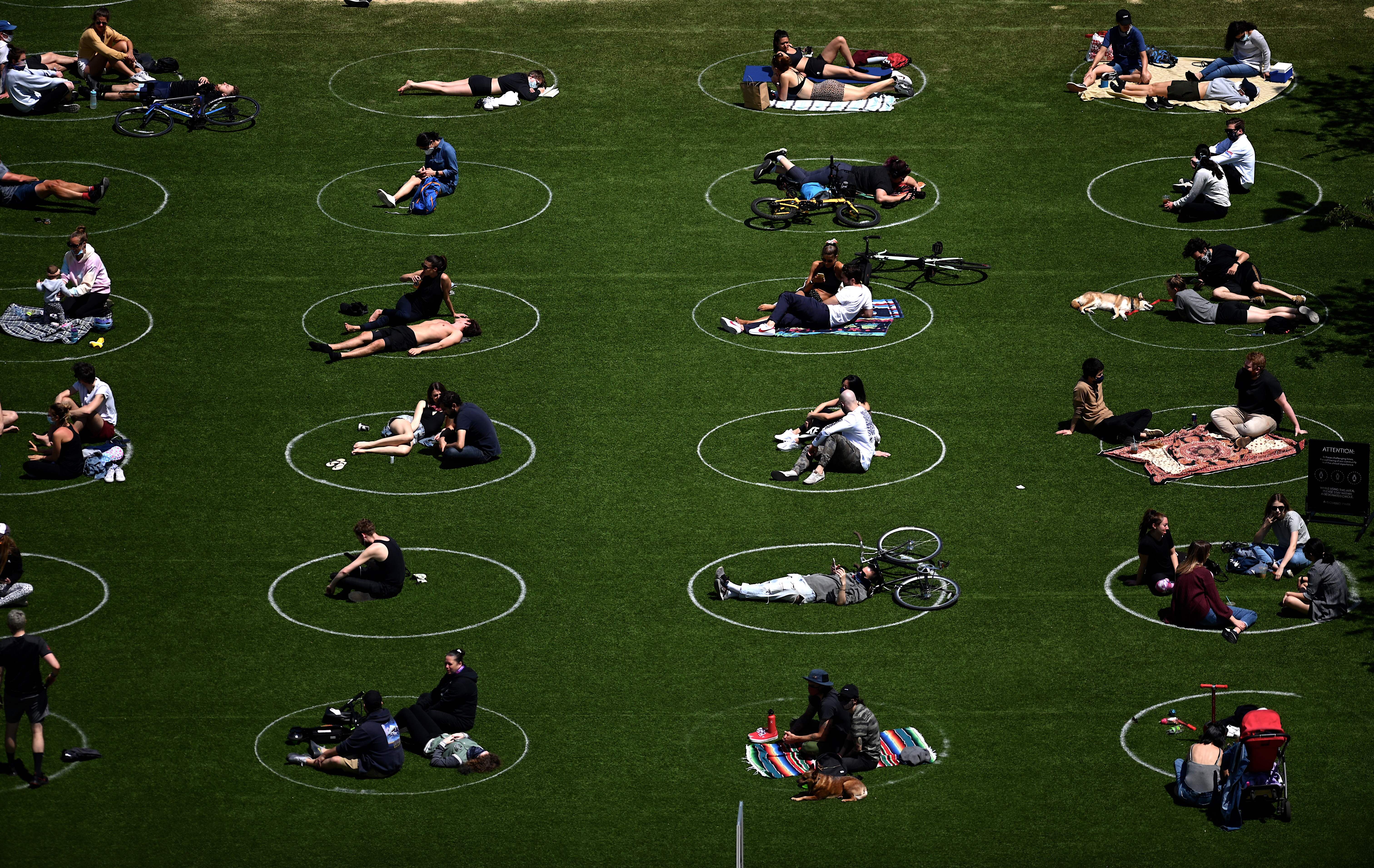
People following social distancing in Domino Park, New York City, on May 17. A study published the following month finds the U.S. would have seen 4.8 million more confirmed coronavirus cases without physical distancing. Photo: Johannes Eisele/AFP via Getty Images
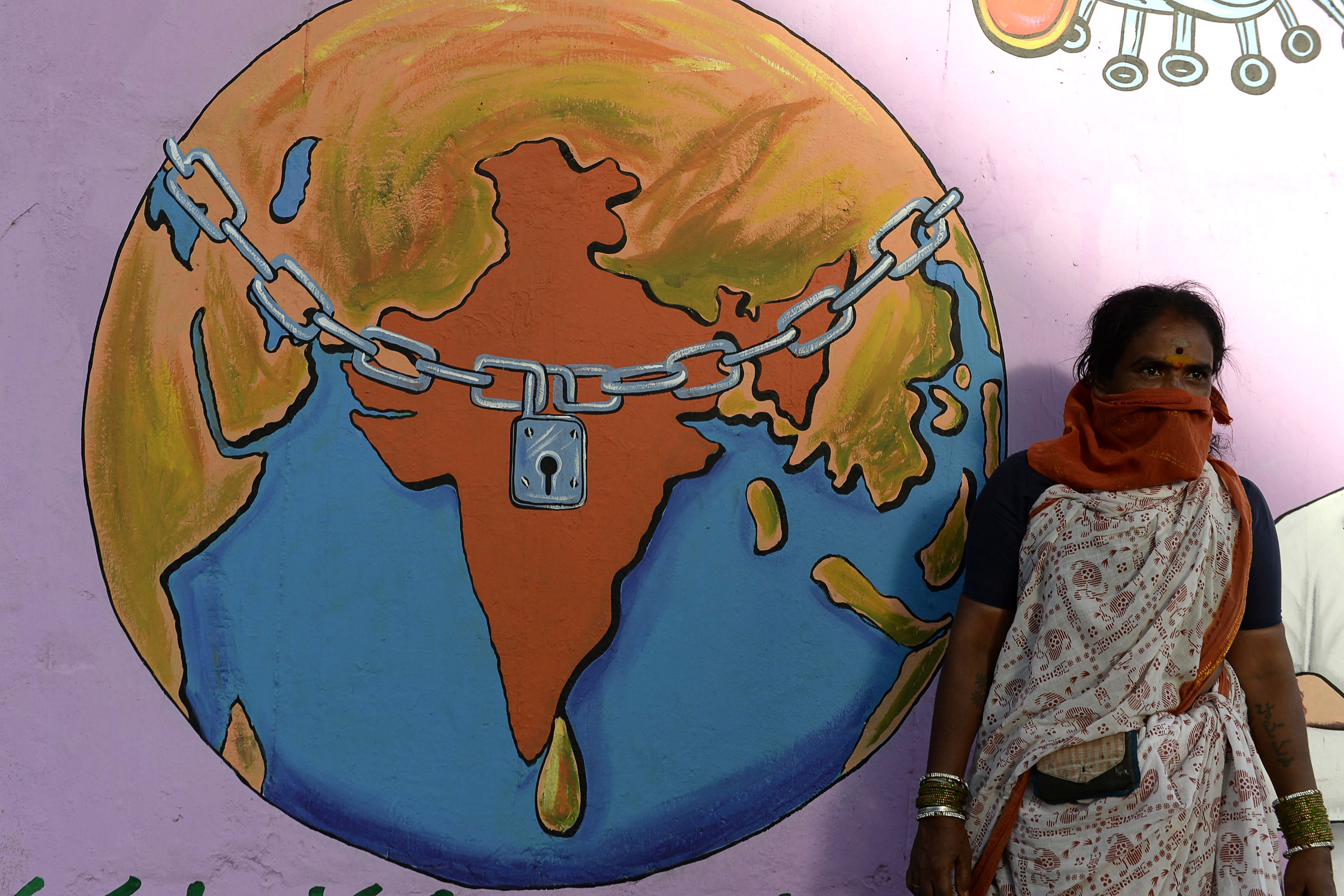
A mural in Hyderabad, India, depicting a locked down world on May 29, the day before Indian officials announce a phased reopening following some two months of lockdown, despite climbing cases. Lockdowns are reimposed on cities and regions in July and November. India has reported the most cases outside the U.S. — over 9.6 million. Photo: Noah Seelam/AFP via Getty Images
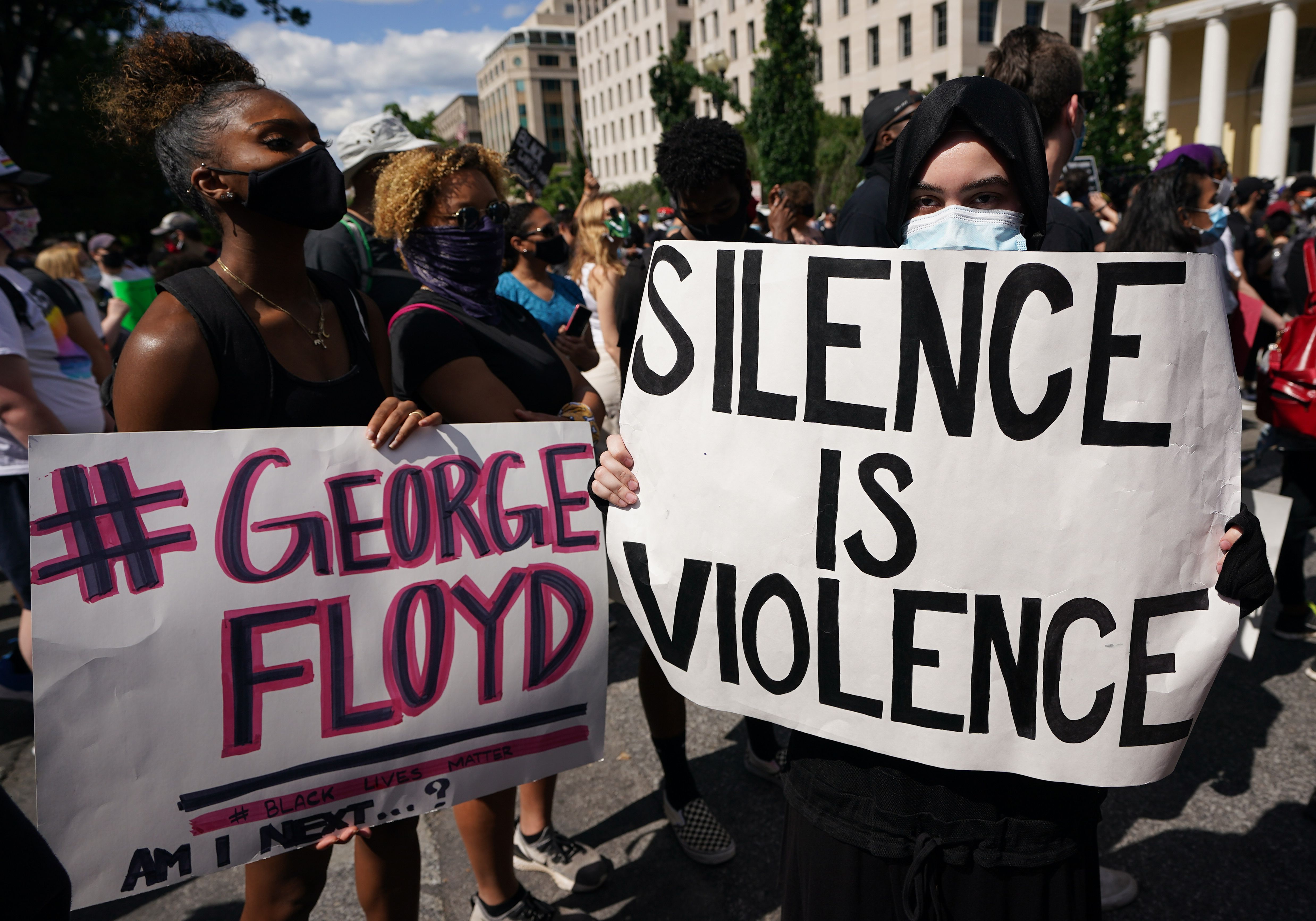
People protesting the death of George Floyd near the White House in Washington, D.C., on May 31. There were concerns the massive rallies could lead to a surge in COVID-19 cases. The fact most protesters took precautions including wearing masks has been cited as one reason why this did not happen. Photo: Mandel Ngan/AFP via Getty Images
June
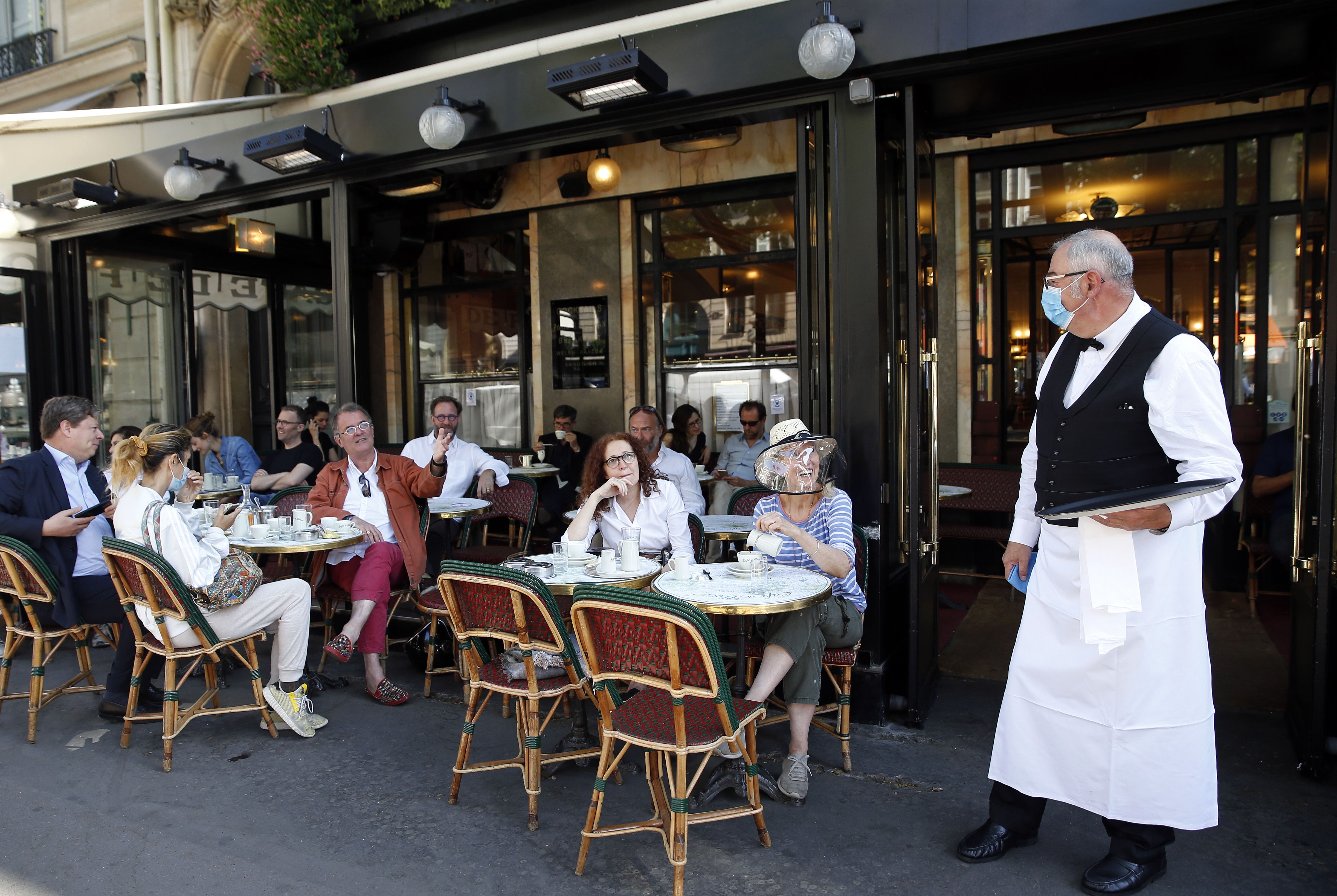
A cafe in Paris on June 2, as the country enters the second phase of easing restrictions that began in May, with cafes and restaurants resuming trade. Fresh spikes saw the country lock down again in October before phasing out restrictions at the year's end. Photo: Chesnot/Getty Images
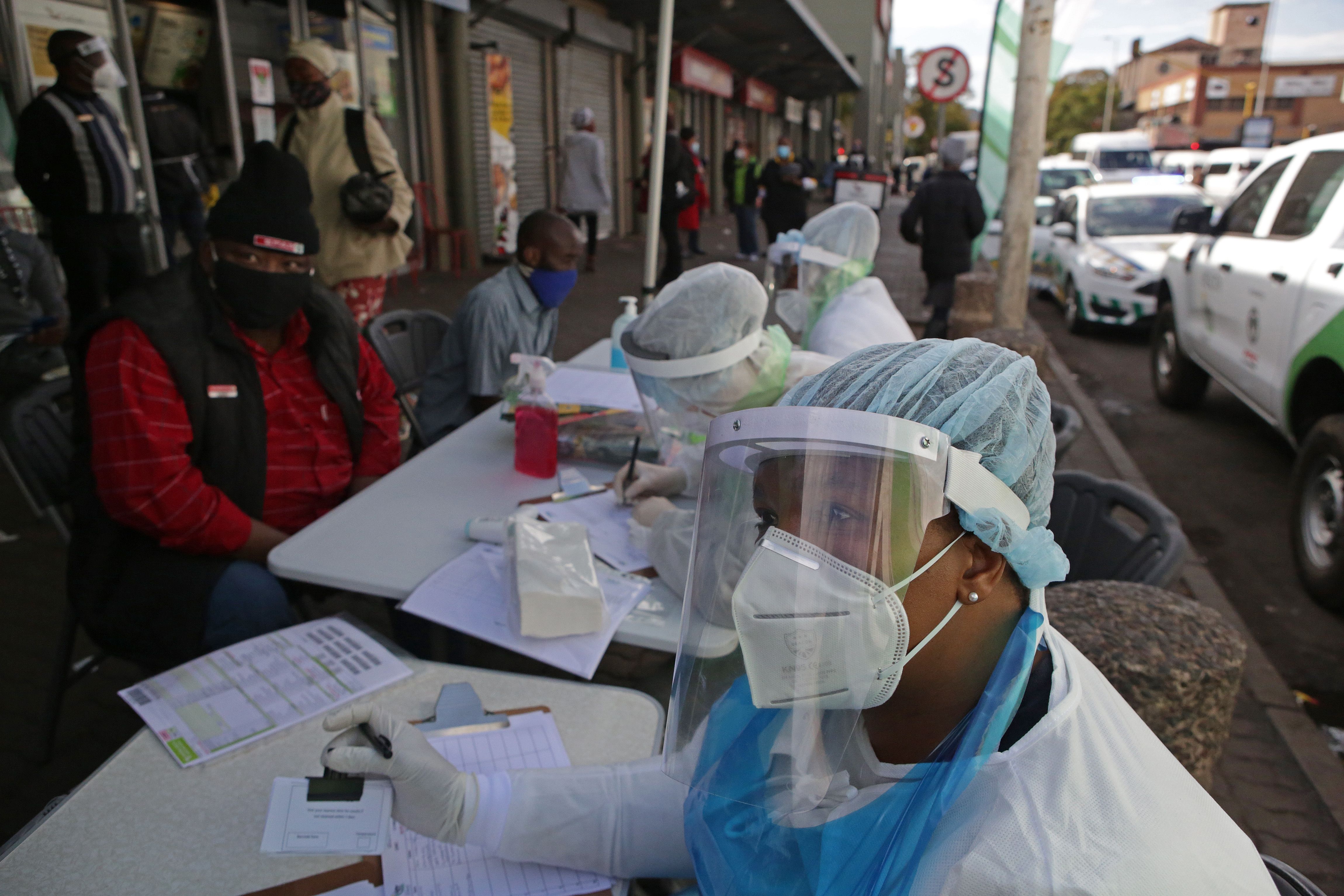
Testing in Pretoria, South Africa, on June 11, as infection numbers exceed 200,000 in Africa. The country has reported the most cases on the continent — over 810,000. Africa has fared "surprisingly well" in terms of coronavirus cases and deaths, but it exacerbated a continent-wide economic crisis, Axios' Felix Salmon reports. Photo: Phill Magakoe/AFP via Getty Images
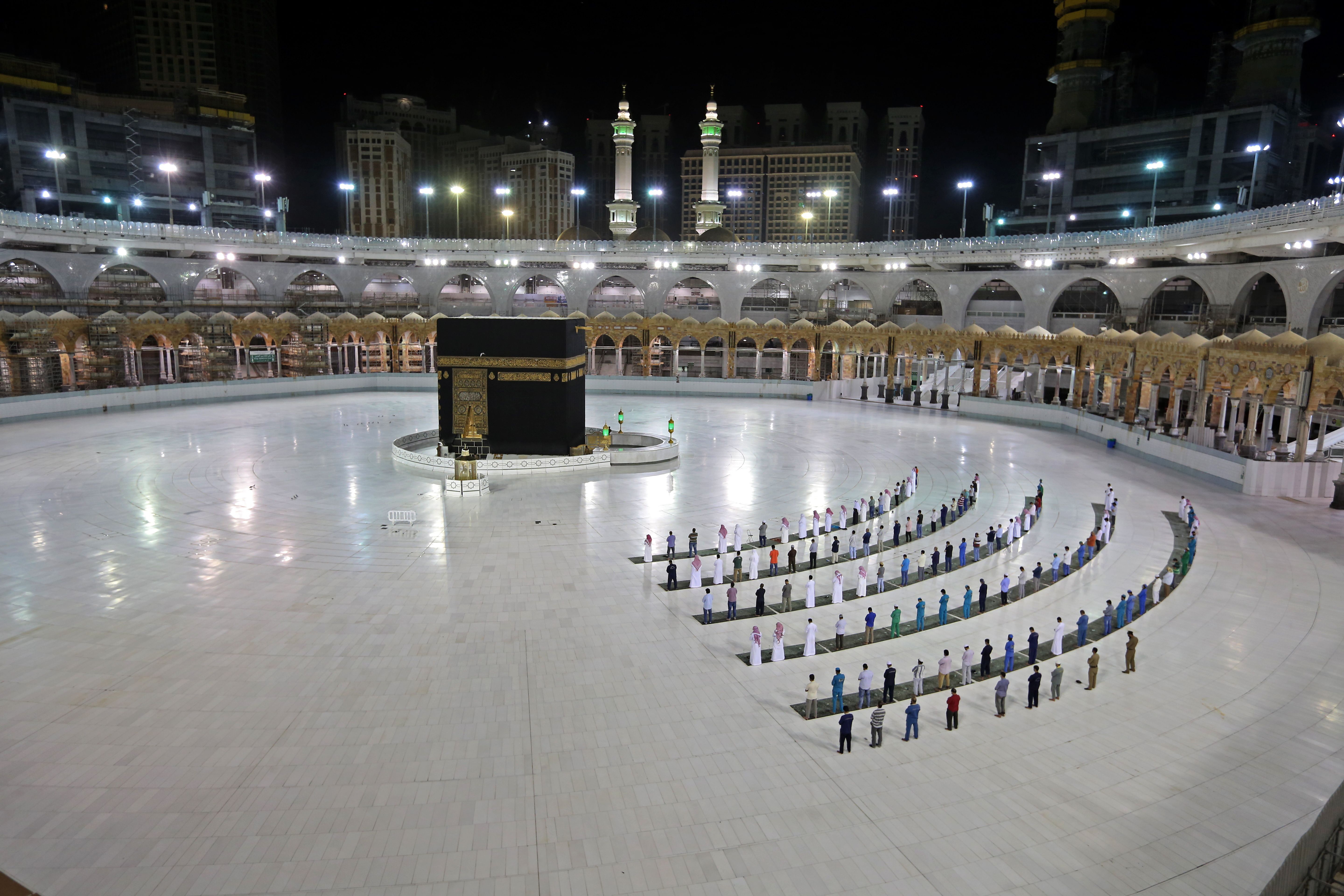
Worshipers hold an al-Fajr prayer at the Kaaba, Islam's holiest shrine, at the Grand Mosque complex in Mecca, Saudi Arabia, on June 23, a day after Saudi officials announced they'd only limit the number of people allowed to perform the hajj in the summer. Photo: STR/AFP via Getty Images
July
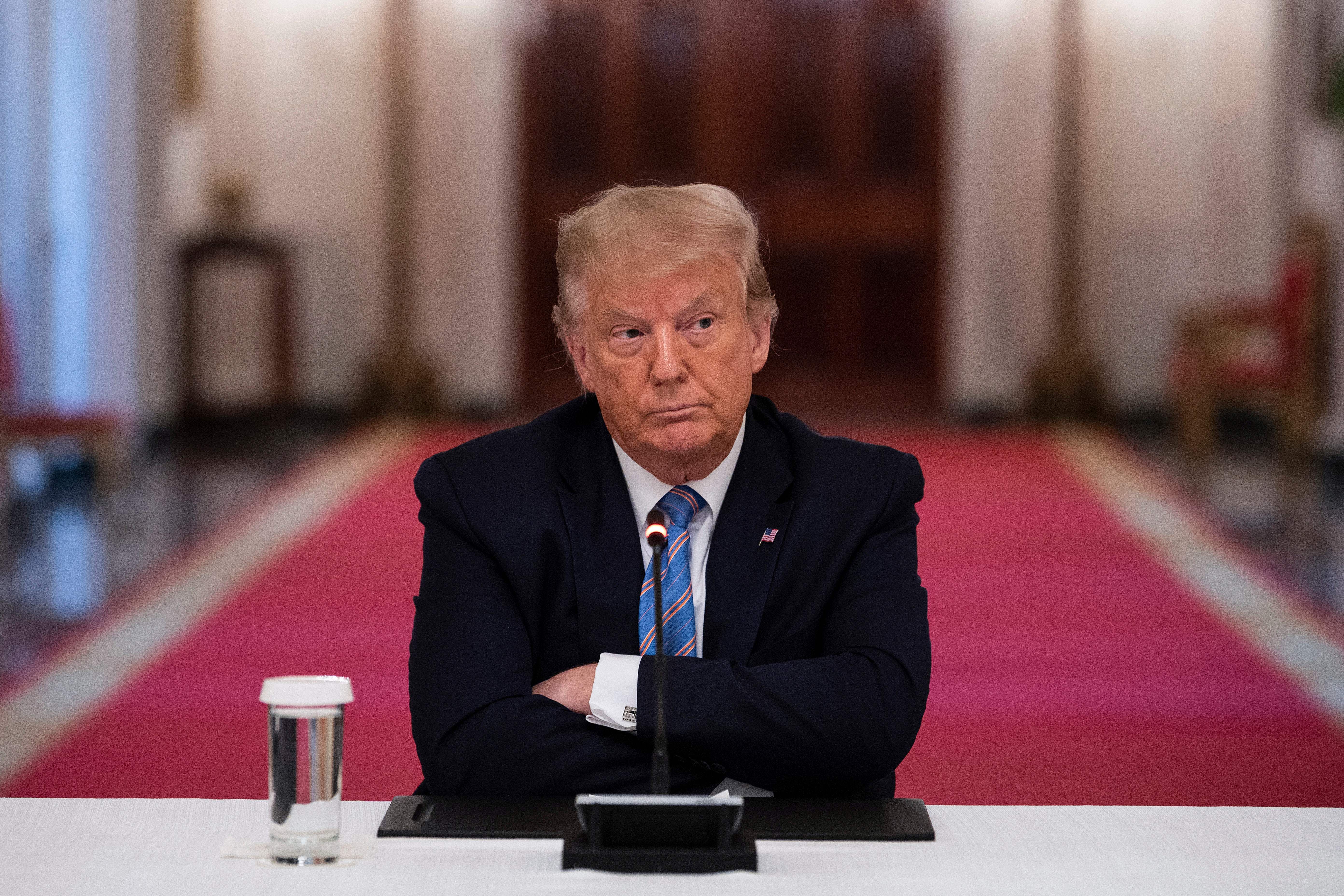
President Trump at a July 7 White House discussion on reopening schools, as he sends formal notice of the U.S. withdrawal from the WHO. His presidential election rival, now President-elect Joe Biden, tweets in response he'll rejoin the WHO on his "first day as President." Photo: Jim Watson/AFP via Getty Images
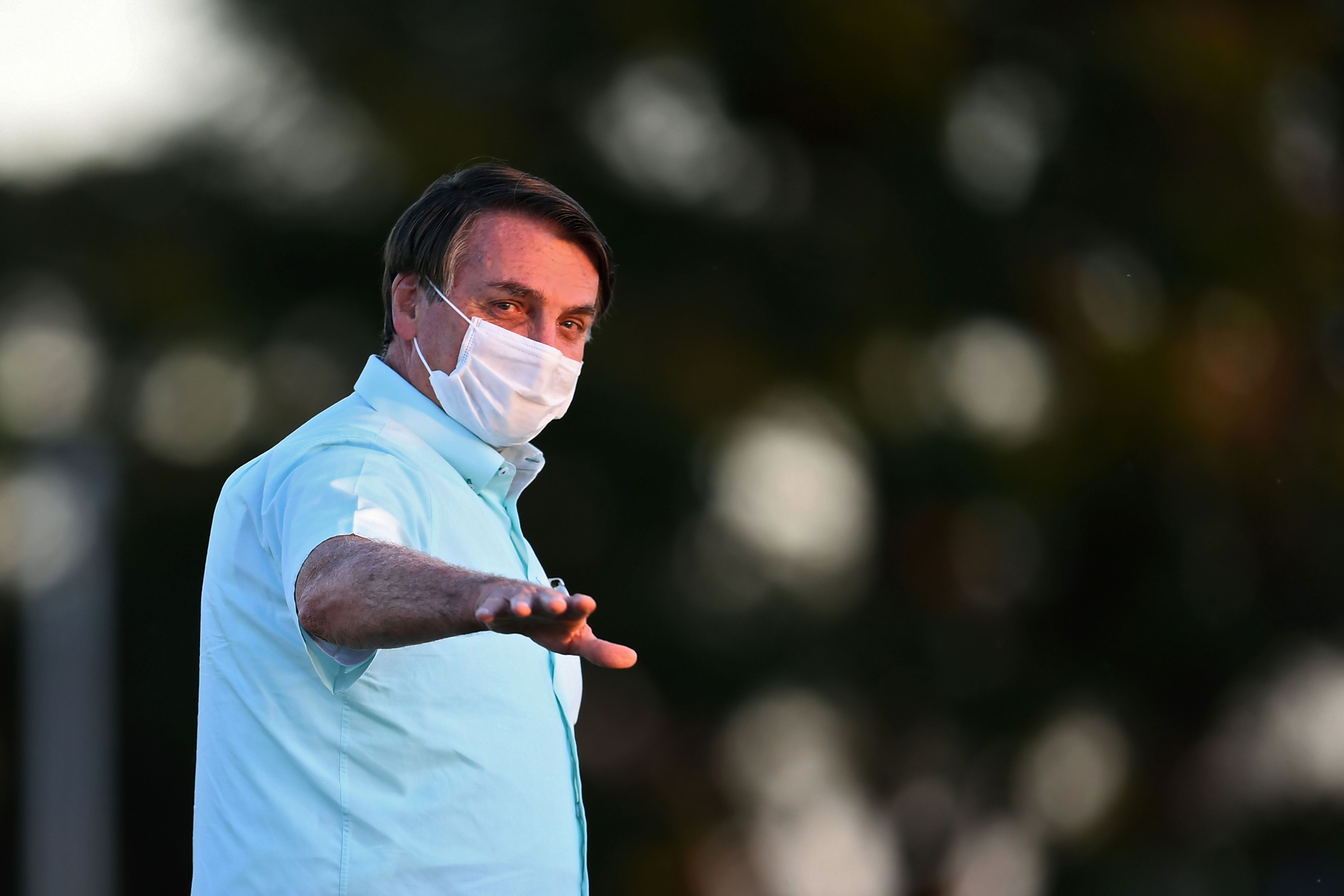
Jair Bolsonaro at the Alvorada Palace in Brasilia on July 22 after tweeting that he tested negative for the coronavirus following three positive results. Bolsonaro has been criticized for downplaying the virus and opposing lockdowns. The country is second only to the U.S. in reporting deaths from COVID-19 and has the world's third-highest case count. Photo: Evaristo Sa/AFP via Getty Images
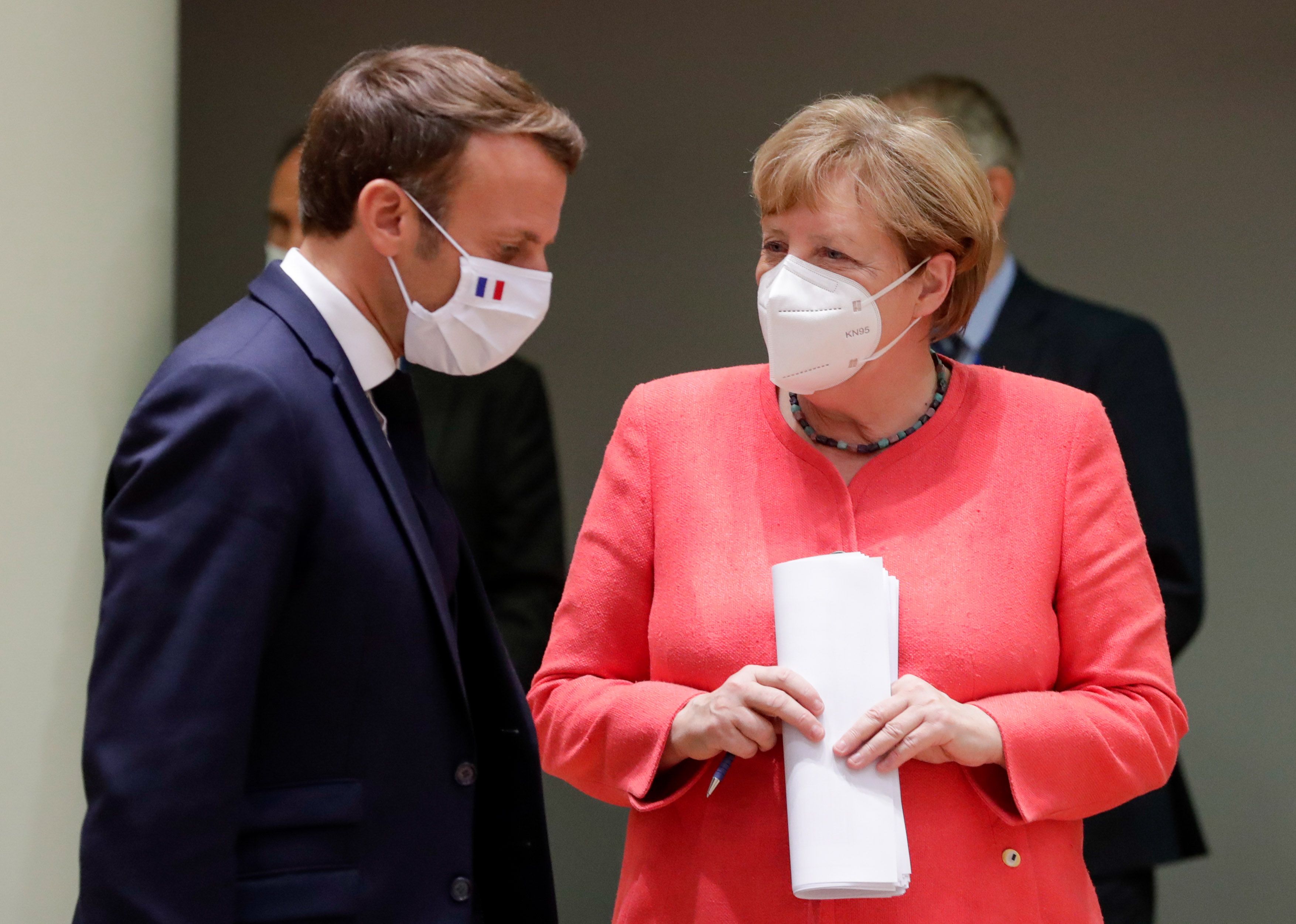
French President Emmanuel Macron and German Chancellor Angela Merkel in Brussels on July 21, as EU leaders agree to a €750 billion ($857 billion) post-pandemic economic recovery package. Photo: Stephanie Lecocq/Pool/AFP via Getty Images
August
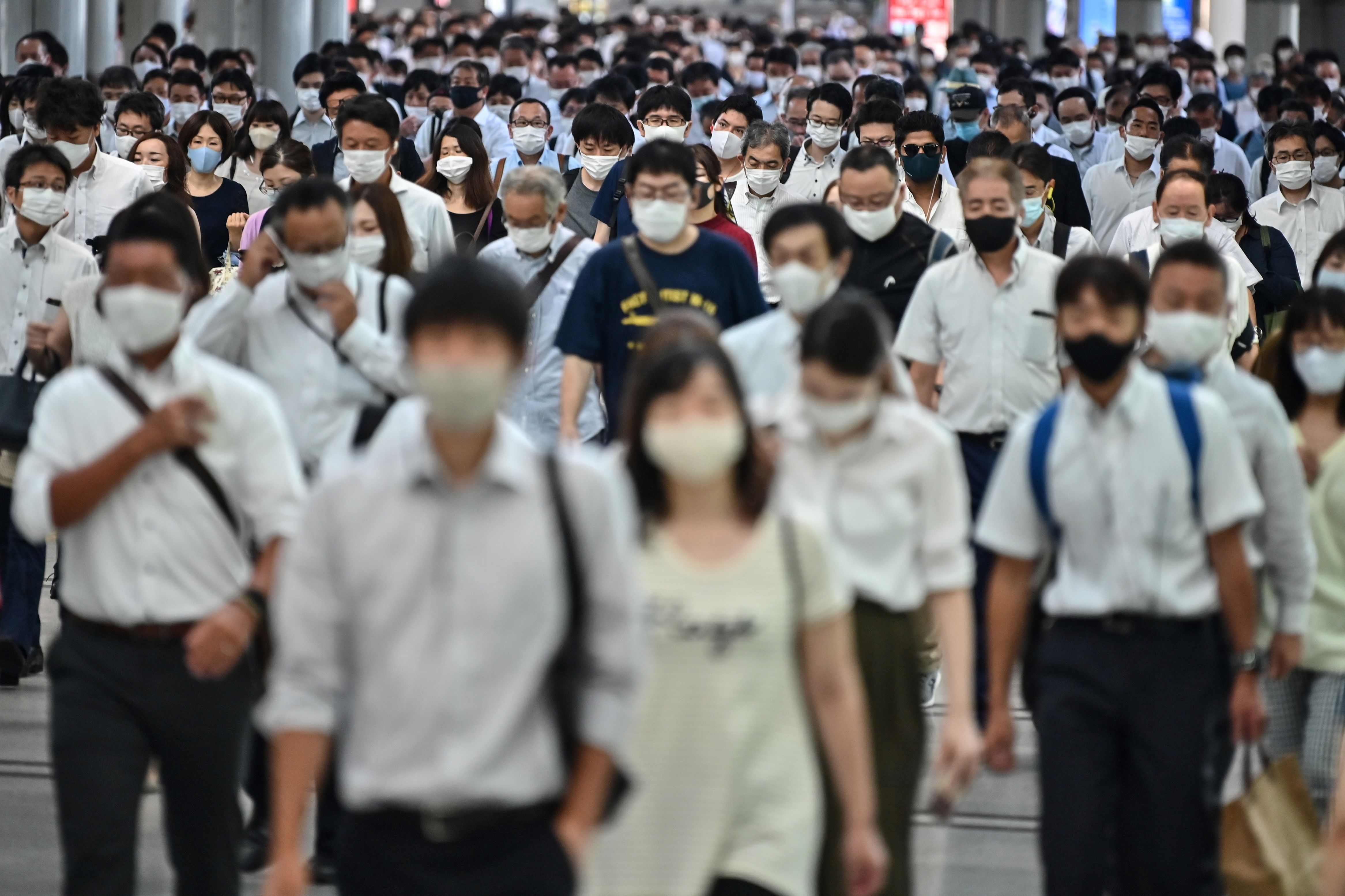
Commuters in Tokyo on Aug. 17, as Japan reports its economy shrank a record 7.8% in the April-June quarter. The country has also incurred multi-billion-dollar costs after postponing the Tokyo Olympics to 2021. The International Monetary Fund has said the pandemic will cause the worst economic downturn since the Great Depression. Photo: Charly Triballeau/AFP via Getty Images
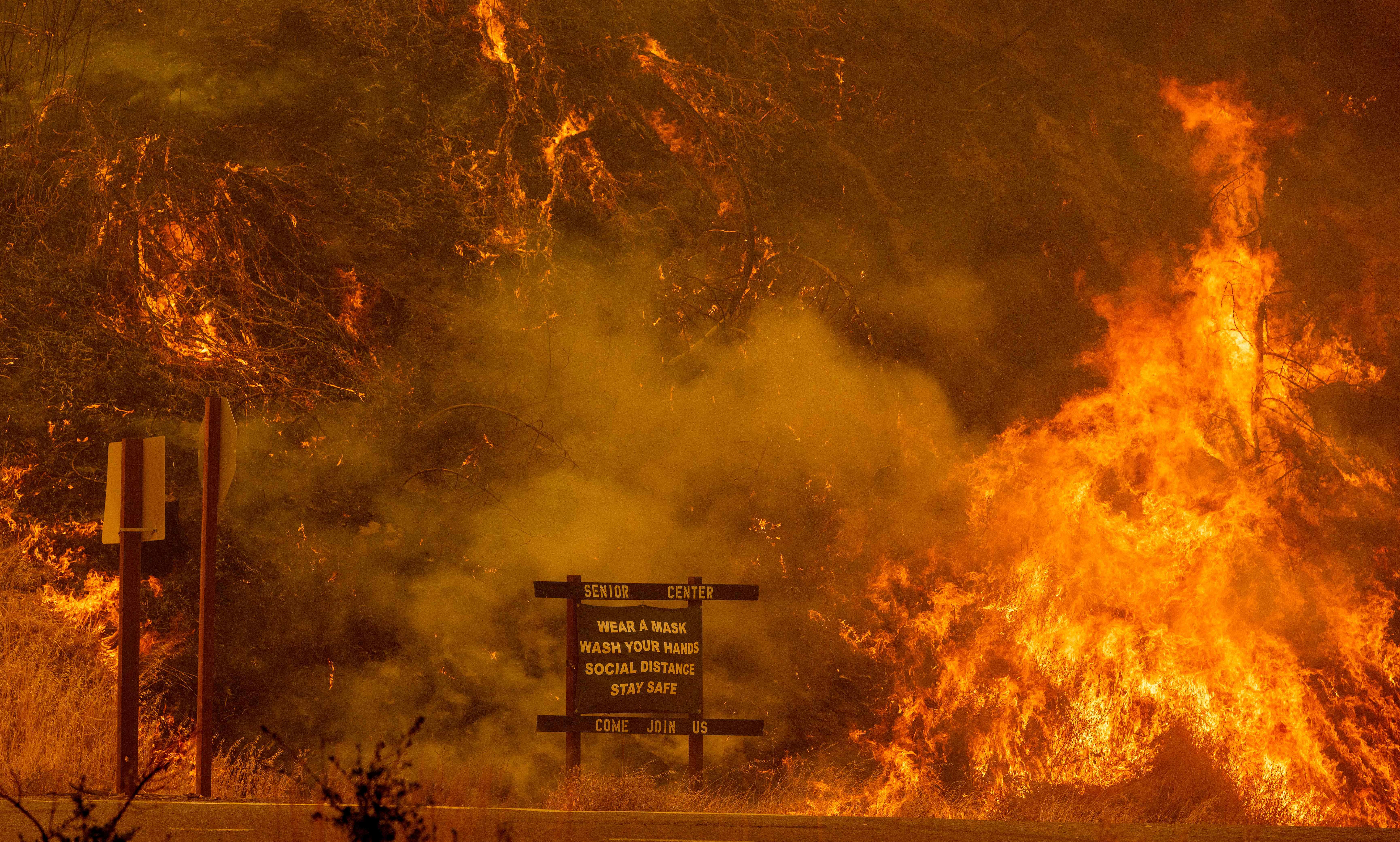
Flames surround a COVID-19 sign during the Hennessey Fire in Napa, Calif., Aug. 18. Health and Human Services Secretary Alex Azar declares a public health emergency at the end of the month, as wildfires bring another crisis to a state then reporting the most infections in the U.S. Photo: Josh Edelson/AFP via Getty Images
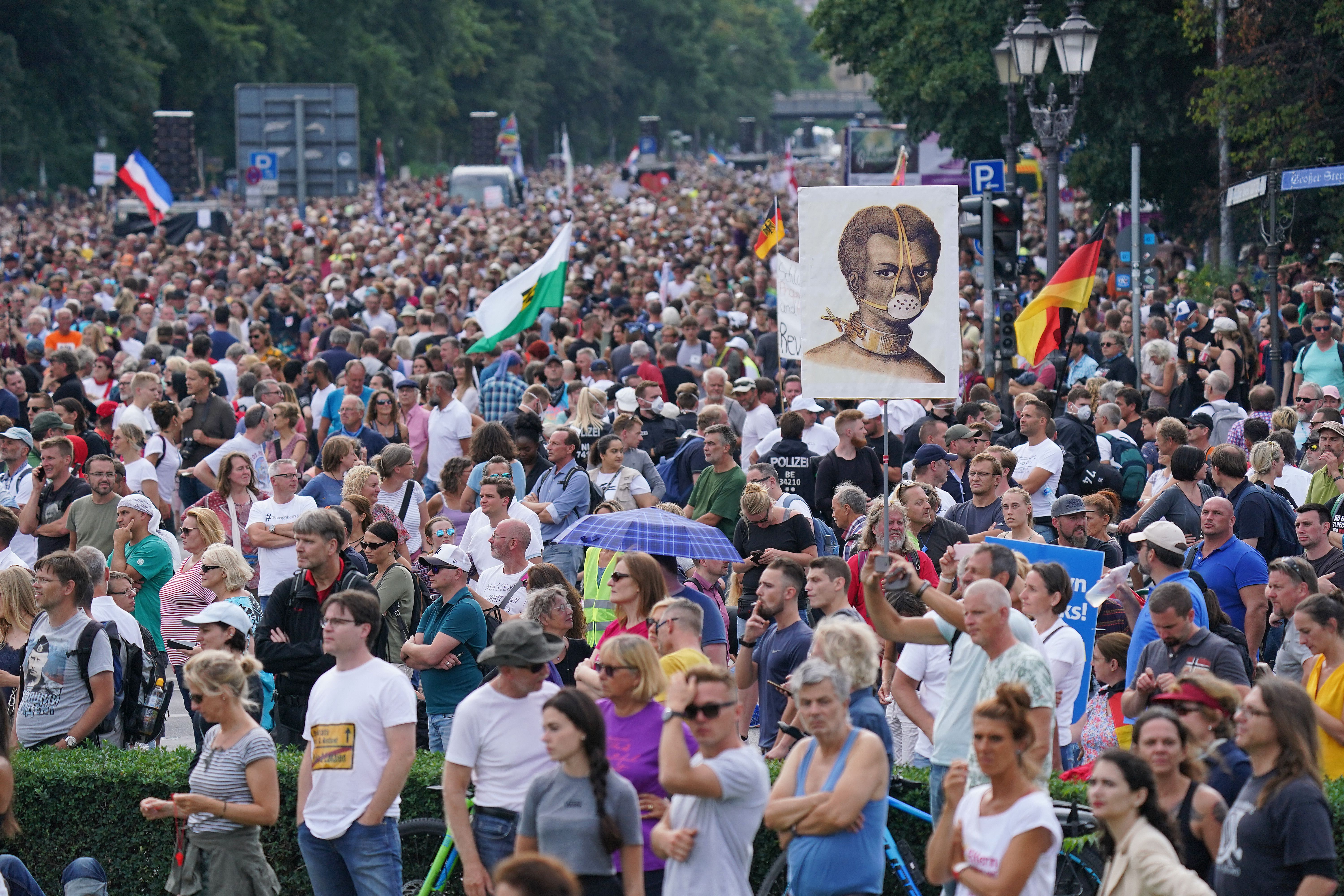
Conspiracy enthusiasts, right-wing extremists, religious conservatives and others rally in Berlin, against coronavirus restrictions on Aug. 29. Varying sizes of anti-lockdown protests have taken place in cities across the world in 2020. Photo: Sean Gallup/Getty Images
September
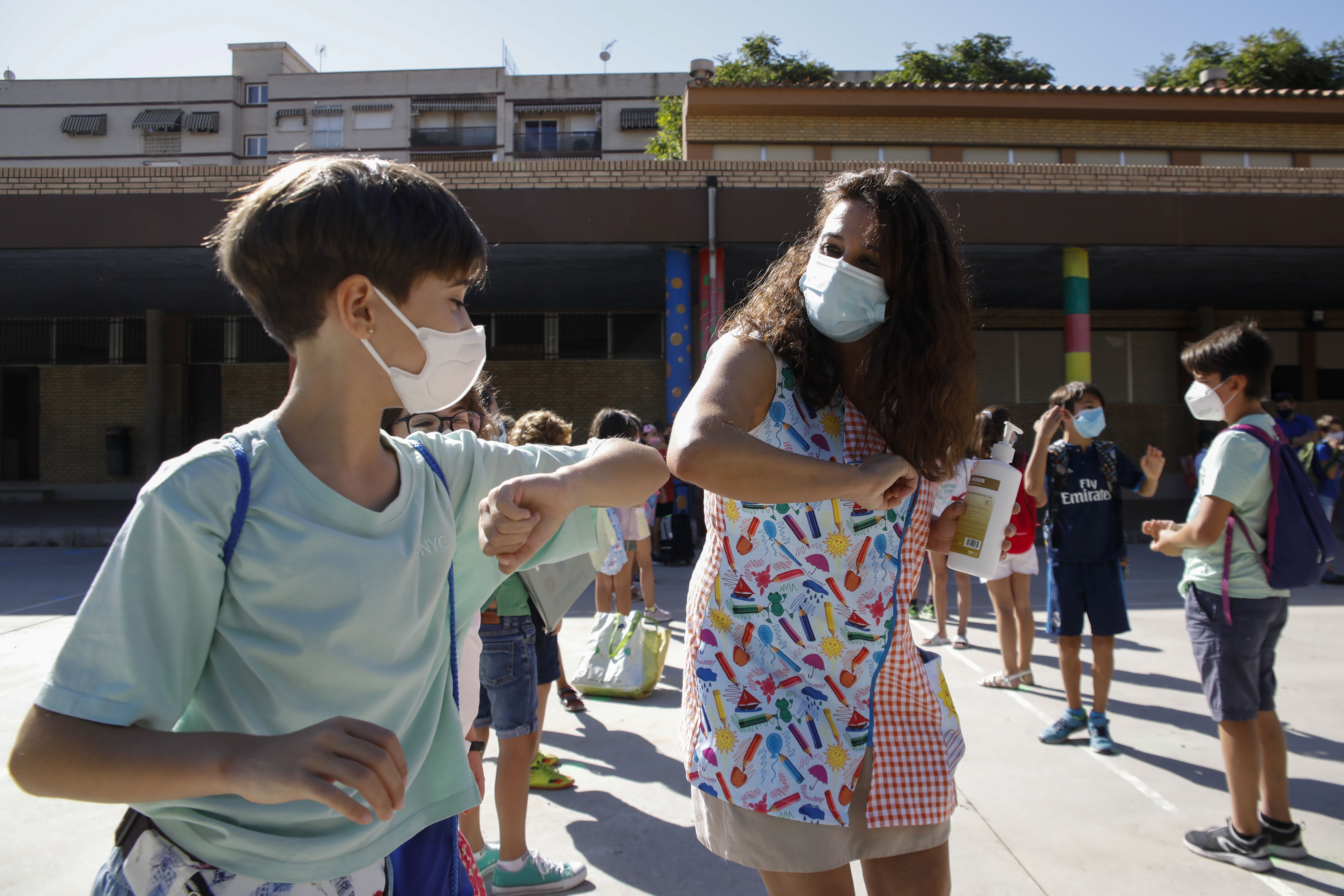
A teacher and a student bumping elbows before entering to class during the first day of school in Granada, Spain, Sept. 10. Elbow bumps have replaced handshakes for many people greeting each other during the pandemic. Photo: Álex Cámara/NurPhoto via Getty Images

People line up to vote early in the 2020 election at the Fairfax County Government Center in Virginia, on Sept. 18. More than 100 million Americans have voted early in the election, driven by the pandemic and its resultant social-distancing measures. Photo: Tasos Katopodis/Getty Images
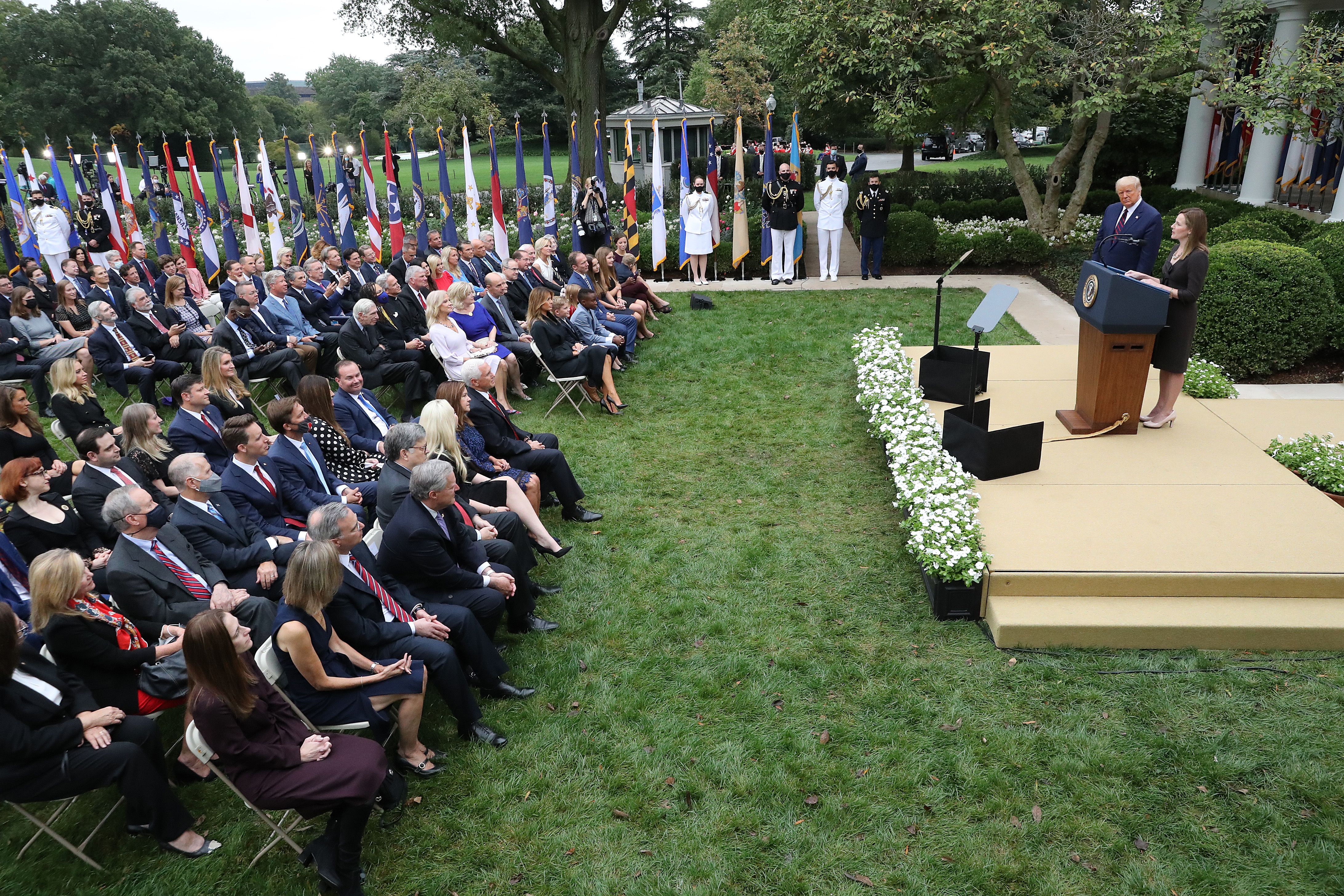
Trump with now-Justice Amy Coney Barrett (R) after announcing her as his Supreme Court nominee in the Rose Garden at the White House Sept. 26. This became known as a "superspreader event" as several attendees tested positive for COVID-19. Photo: Chip Somodevilla/Getty Images
October
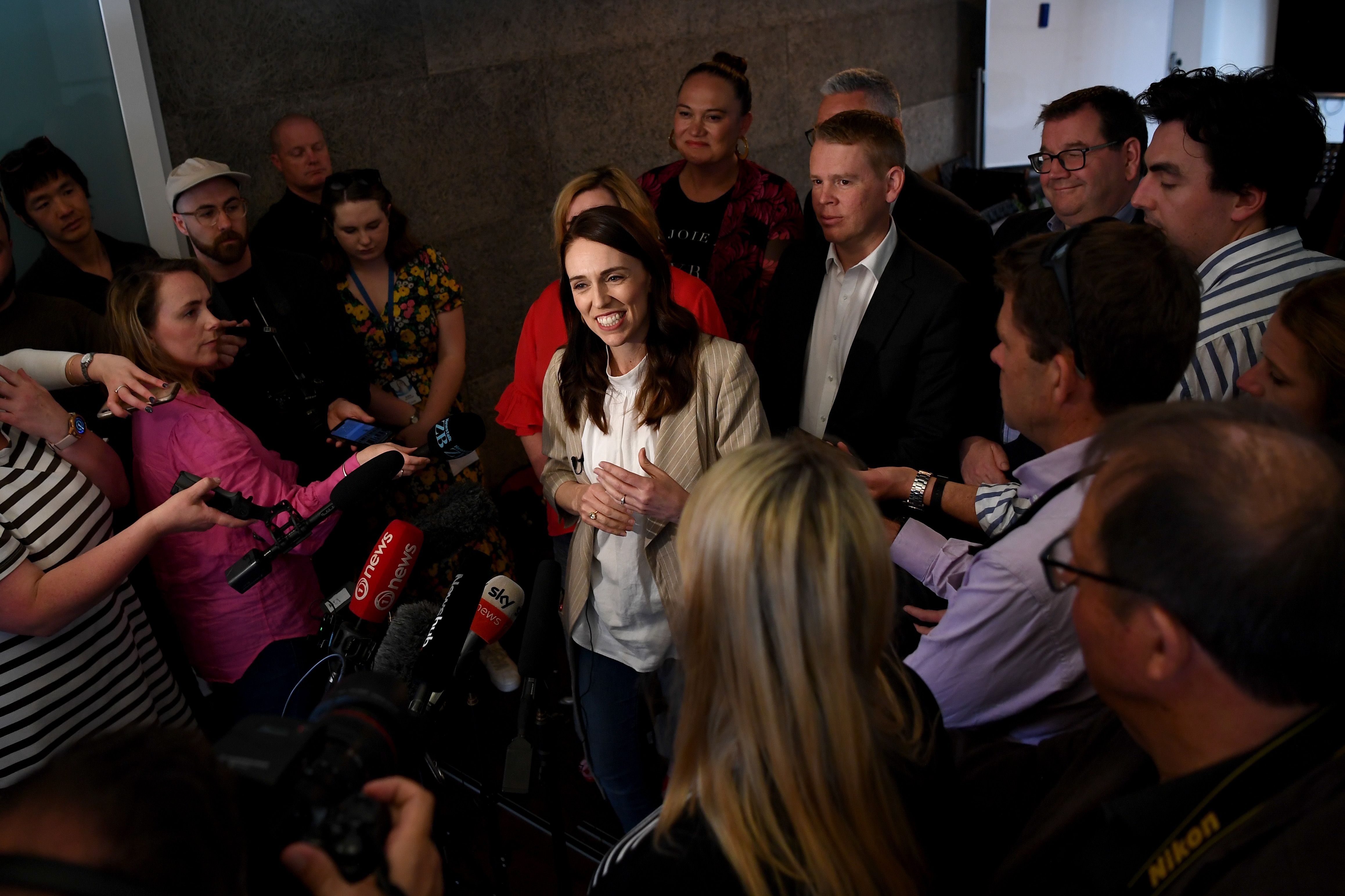
New Zealand Prime Minister Jacinda Ardern holds a press conference in Auckland Oct. 18 following her Labour Party's landslide election win — seen as a vote of confidence in her science-led handling of the pandemic, which has won praise from the WHO. Photo: Hannah Peters/Getty Images
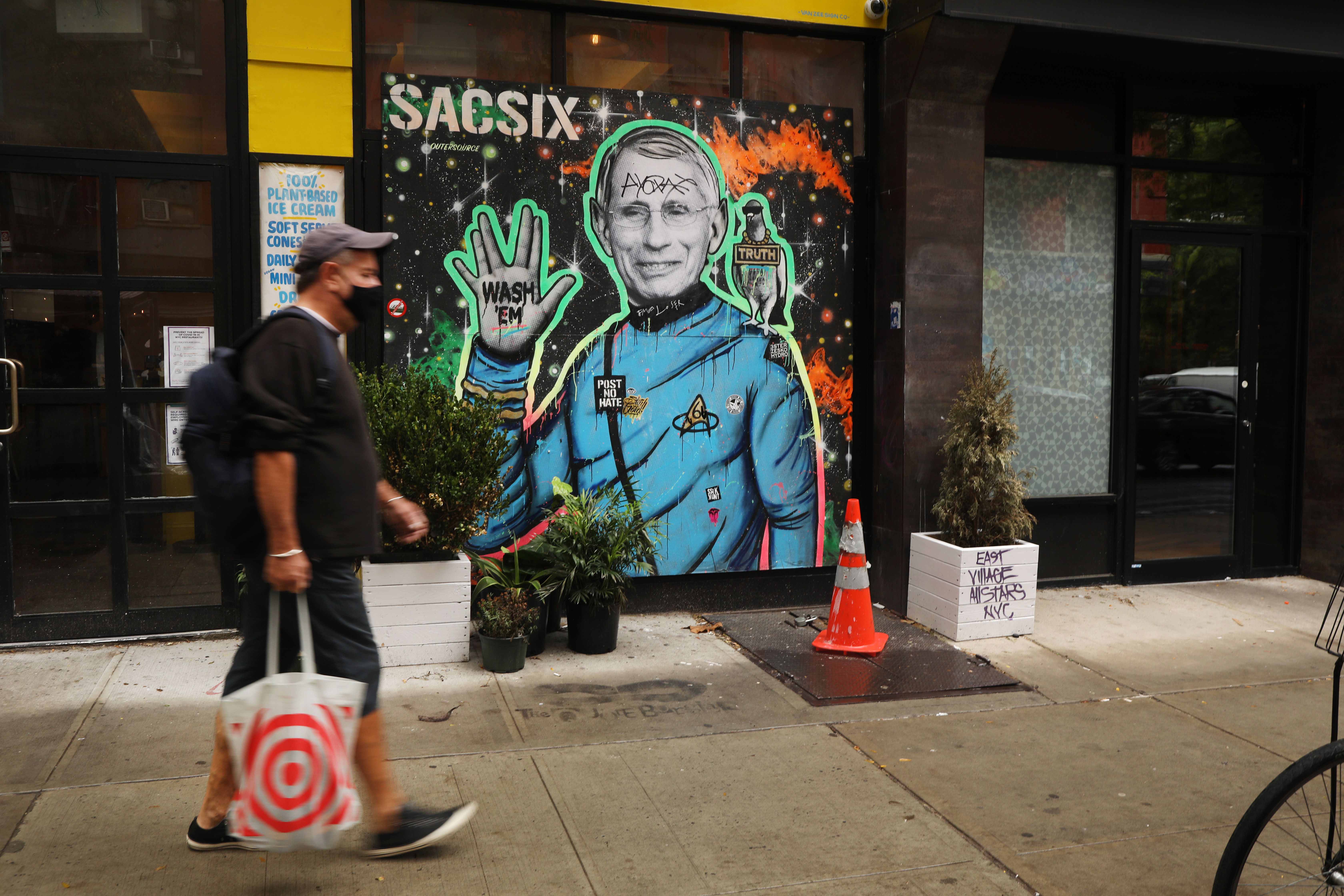
The pandemic has seen NIAID director Anthony Fauci recognized with tributes like this New York City mural, pictured Oct. 20, and Brad Pitt playing him on "Saturday Night Live." Trump features him in an October campaign ad, Fauci says without his permission and out of context. The president escalates attacks on Fauci during this month, as cases surge. Photo: Spencer Platt/Getty Images
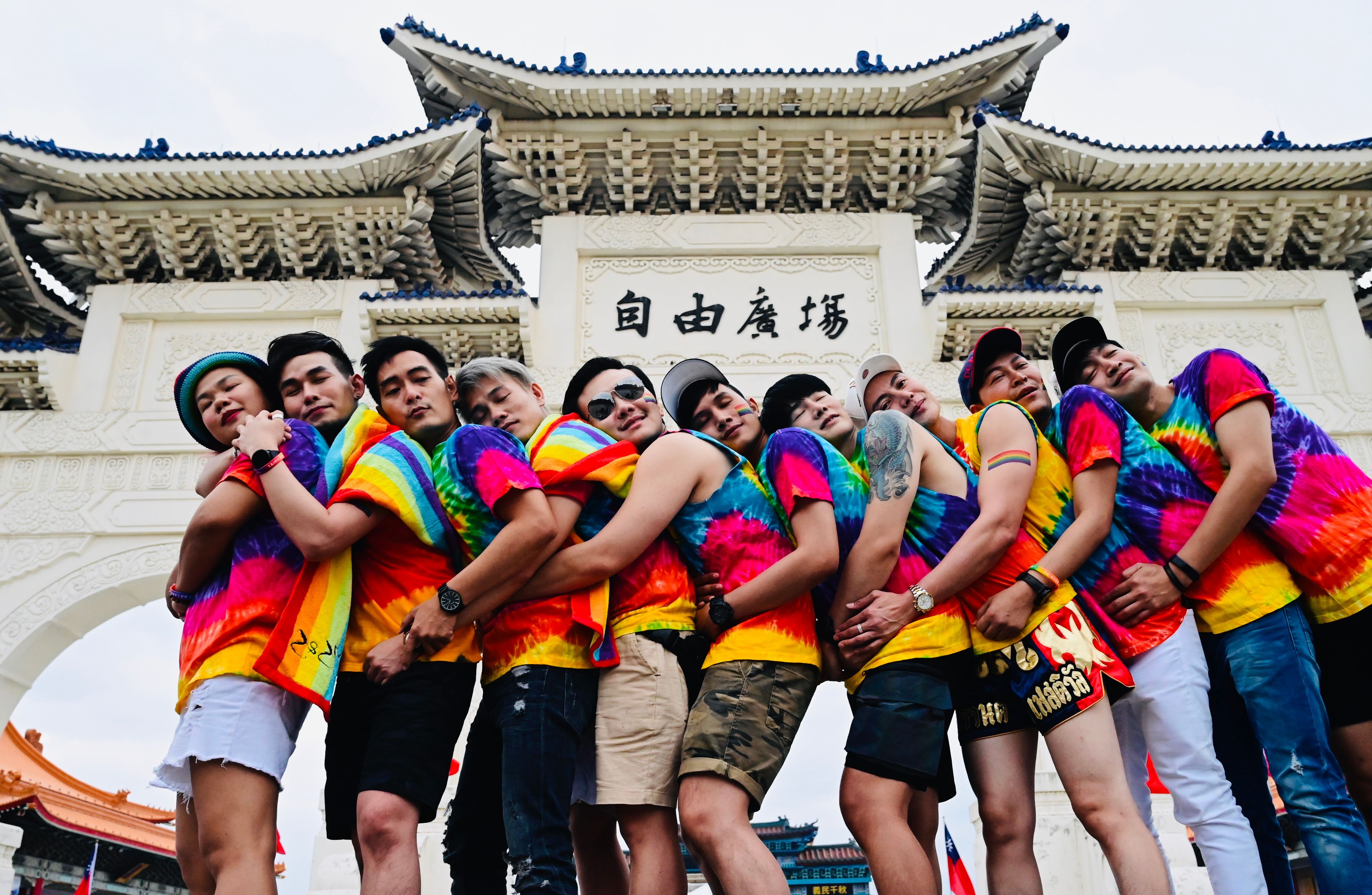
A gay pride parade in Taipei on Oct. 26. Three days later, Taiwan marks a world record 200 days with no community COVID-19 cases, driven by factors including tough travel regulations, a digital quarantine system and rigorous contact tracing. Photo: Sam Yeh/AFP via Getty Images
November
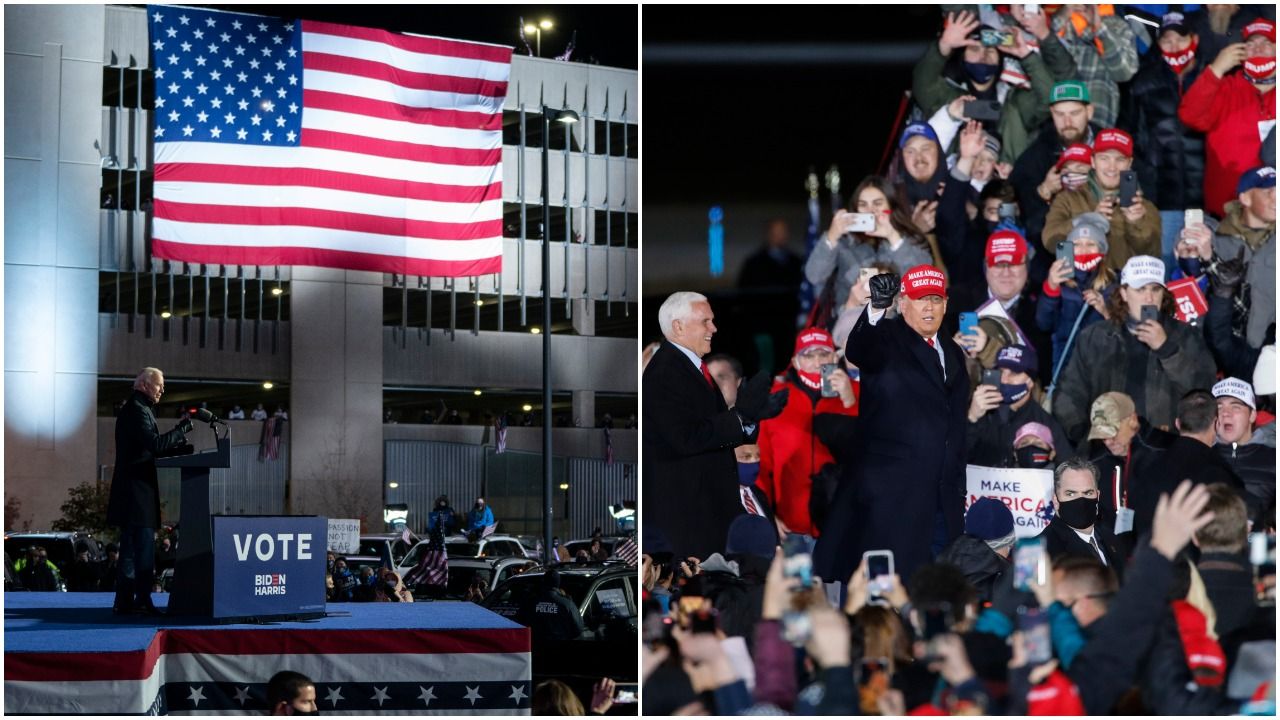
The different approaches to the pandemic are evident in these election eve rally images of Joe Biden (L) at a drive-in event in Pittsburgh and Vice President Mike Pence and President Trump in Grand Rapids, Mich. Photo: Drew Angerer/Getty Images/Kamil Krzaczynski/Getty Images
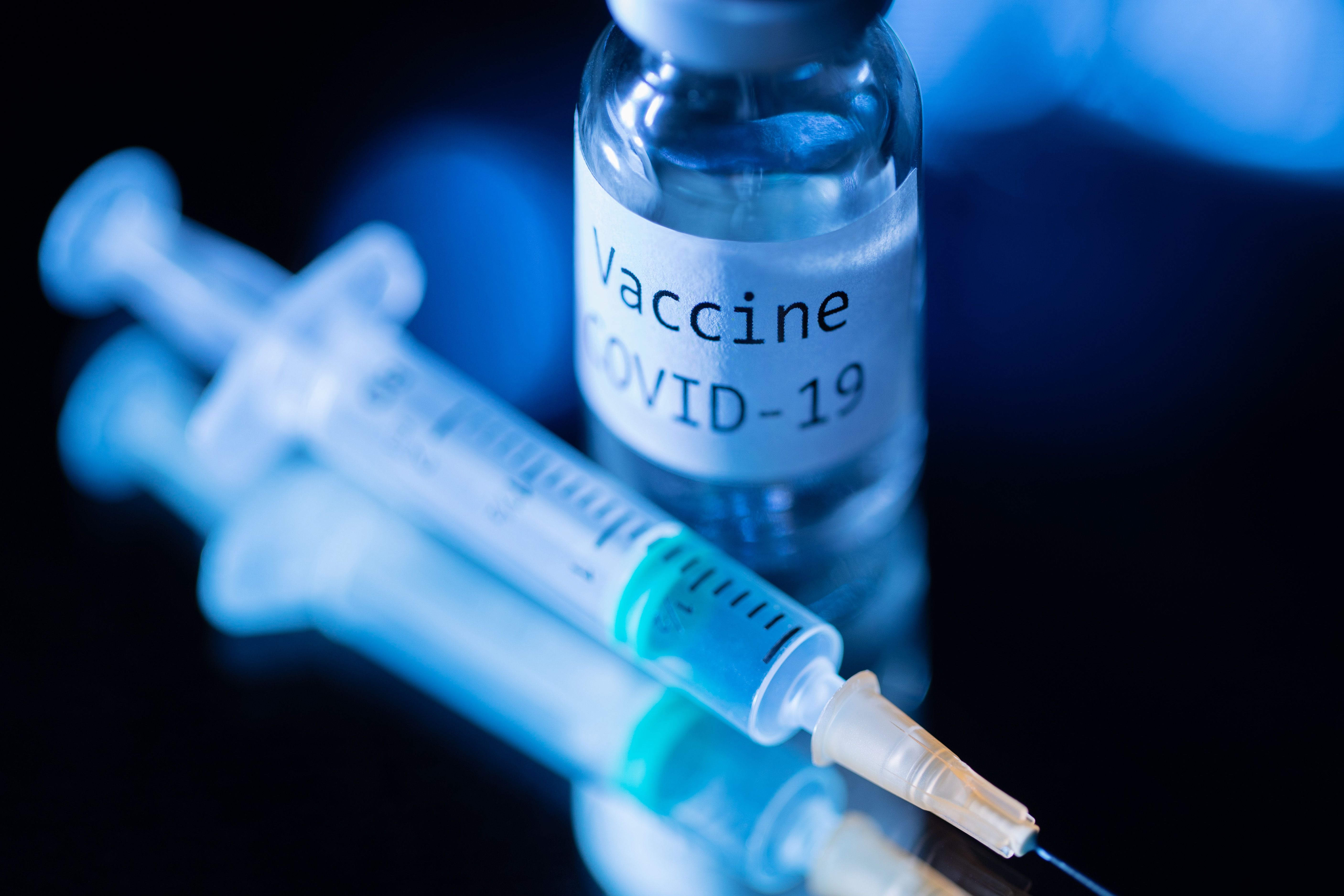
November offers hope of an end to the pandemic, with Pfizer and BioNTech announcing Nov. 9 their vaccine is safe and 90% effective. Moderna confirms on Nov. 16 that its candidate is 94.5% effective and Oxford-AstraZeneca say on Nov. 23 their vaccine is up to 90% effective. Photo: Joel Saget/AFP via Getty Images
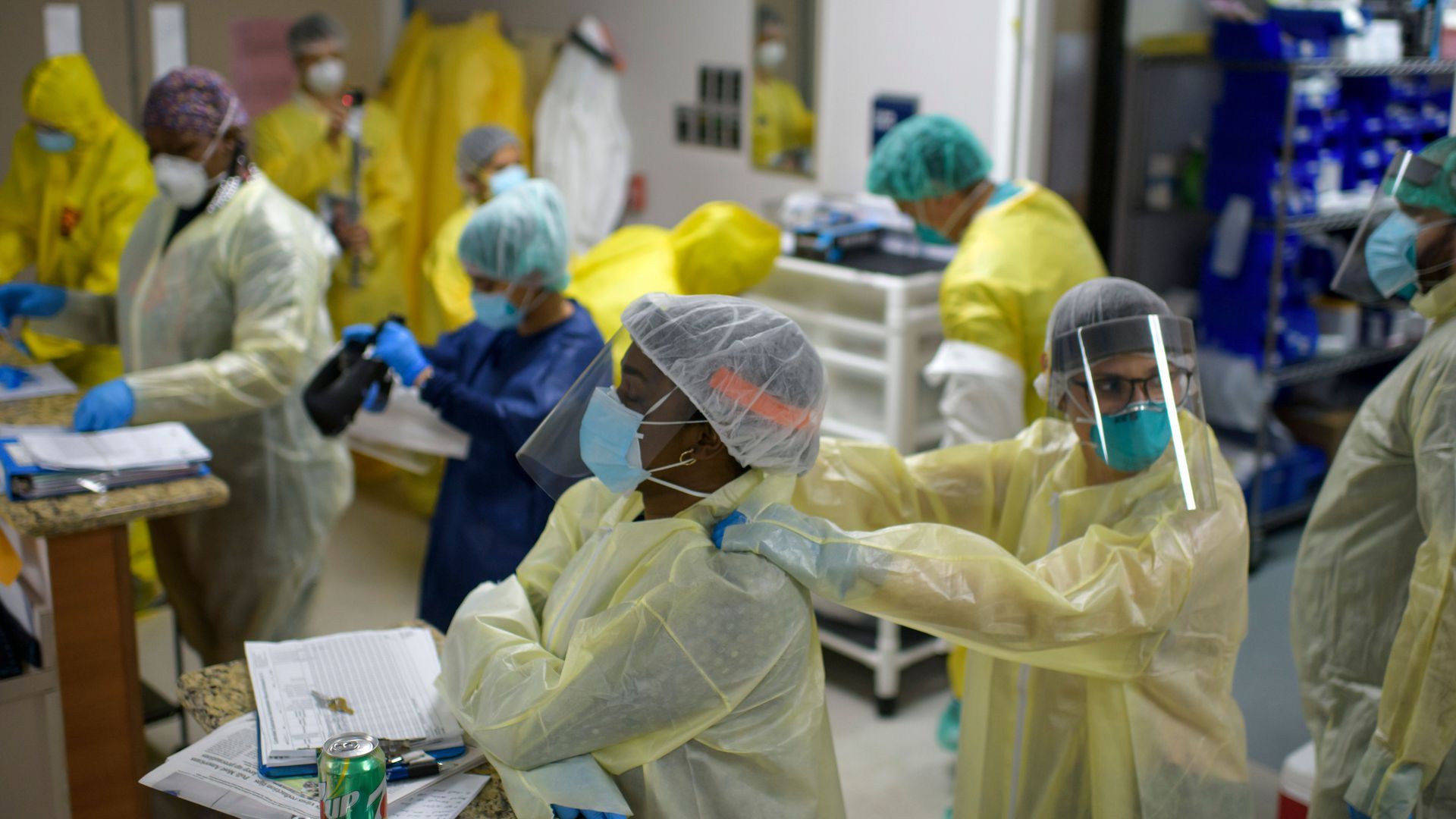
Health care workers at the United Memorial Medical Center in Houston. The state became on Nov. 11 the first in the U.S. to surpass 1 million cases. California and Florida have since surpassed the milestone. Photo: Mark Felix/AFP via Getty Images
December

Geotagged flags on Dec. 1 at the "In America How Could This Happen..." public art installation in Washington, D.C. The memorial, led by artist Suzanne Firstenberg, honors lives lost to COVID-19 in the U.S., which has the world's highest virus death and cases toll. Over 280,000 people have died and some 14.5 million have been infected. Photo: Roberto Schmidt/AFP via Getty Images
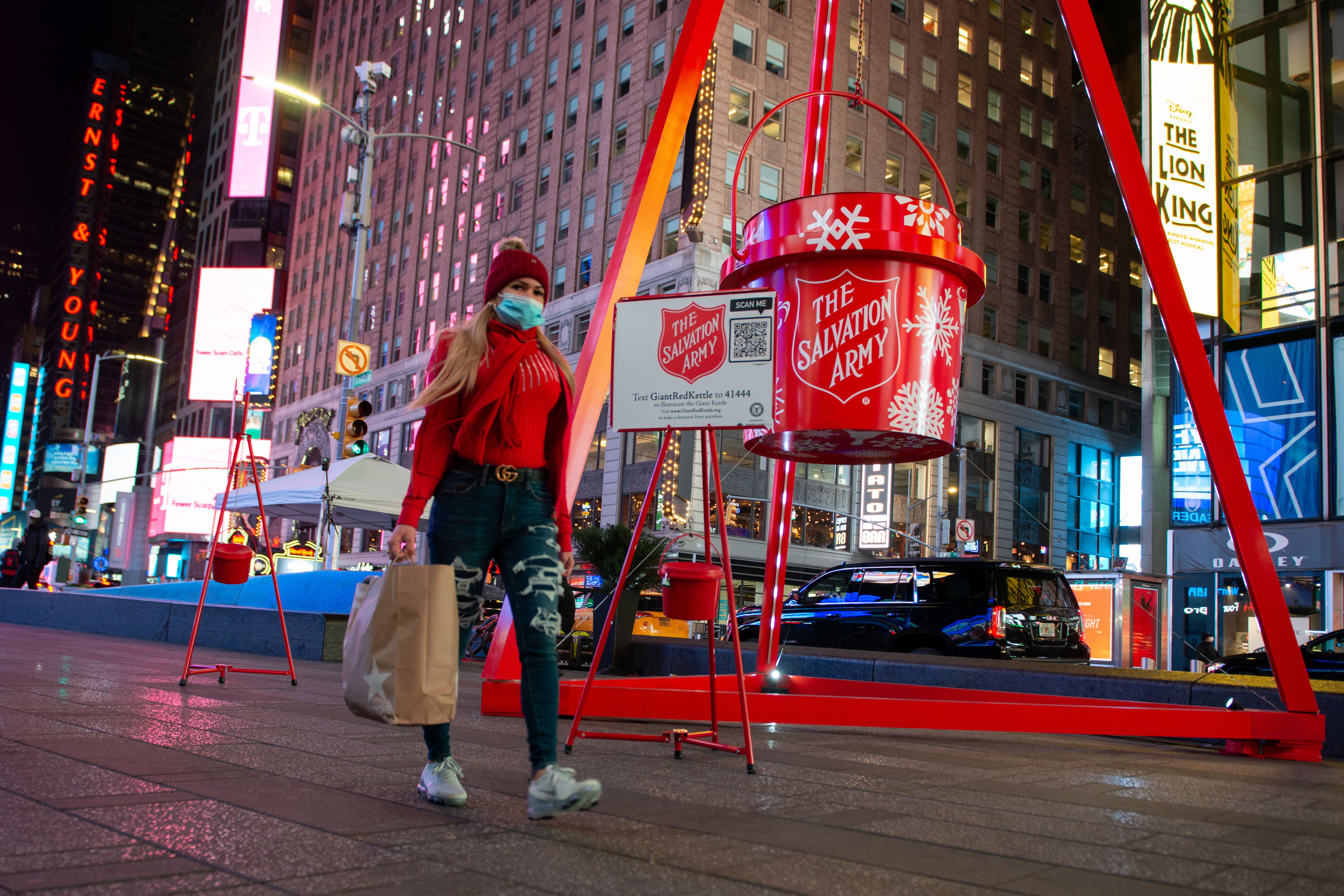
The Salvation Army's Giant Red Kettle in New York City's Times Square on Dec. 2. "With COVID-19 inhibiting volunteers from the Salvation Army to personally gather donations from the street, the charity has devised a way to garner both financial contributions and passerby's attention through the installation," the charity says in a statement. Photo: Alexi Rosenfeld/Getty Images
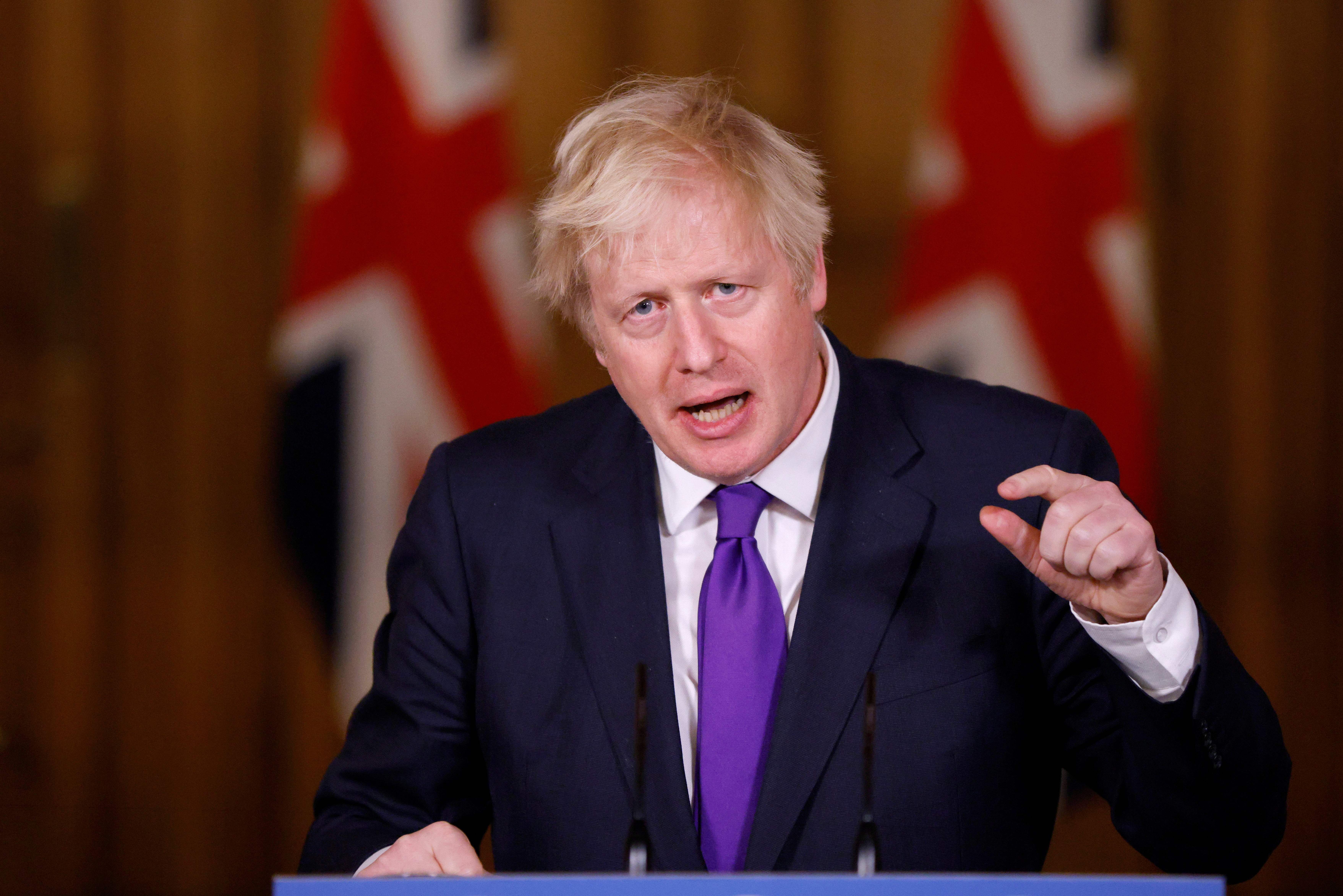
Prime Minister Boris Johnson during a Dec. 2 press conference in London, hours after the U.K. becomes the first Western nation to give emergency approval to a COVID-19 vaccine — Pfizer-BioNTech's one. Russia and China have already cleared vaccines, but scientists have cast doubts on their safety and efficacy. Photo: John Sibley/Pool/AFP via Getty Images